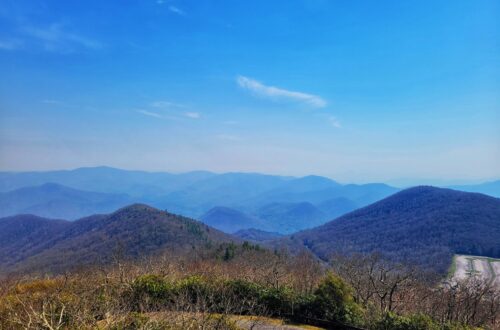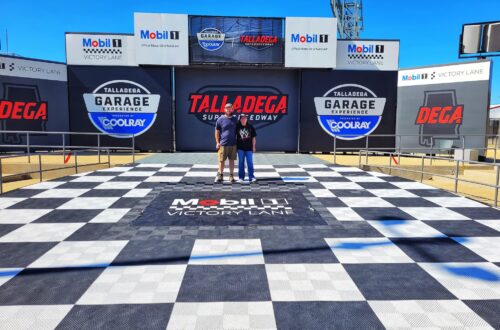Our visit to Oak Ridge, Tennessee, was like stepping into a hidden chapter of American history. Known as the “Secret City” during the Manhattan Project, Oak Ridge played a pivotal role in the development of the atomic bomb, and today, it offers a unique glimpse into its mysterious past. We spent a day touring the key sites, like the American Museum of Science and Energy, the K-25 History Center, and the Oak Ridge National Laboratory, learning about the groundbreaking science, the people behind the project, and the lasting impact this city had on the world. From exploring exhibits on the Manhattan Project to seeing decommissioned supercomputers, our visit was a deep dive into Oak Ridge’s fascinating history. Keep reading for highlights from our day and tips for how you can visit the Secret City!
History of the Secret City
Back in 1942, when the U.S. was deep in the fight of World War II, the government launched a secret program called the Manhattan Project– an effort to build the world’s first atomic bombs before Nazi Germany could. Oak Ridge, Tennessee, became one of the main hubs for this top-secret mission. Tucked into the hills of East Tennessee, the site was perfect for staying out of the spotlight while tackling some seriously groundbreaking science. Originally called the Clinton Engineer Works, Oak Ridge quickly transformed from farmland into a bustling city almost overnight, built to house and support tens of thousands of workers and their families.
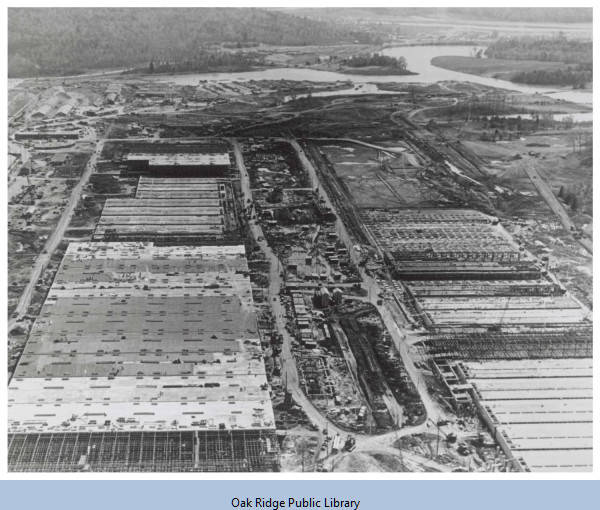
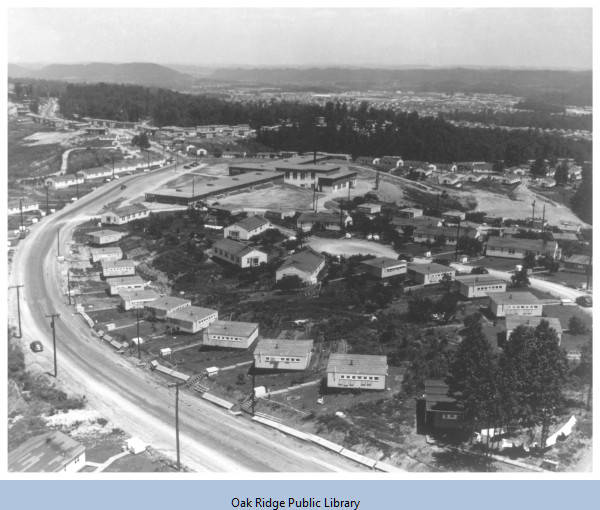
What started as a plan for 13,000 residents quickly ballooned to over 75,000 by 1945. Oak Ridge became home to several major facilities, each focused on one big goal: enriching uranium for use in atomic bombs. The four key plants, X-10, Y-12, K-25, and S-50, were built in a flurry of construction between 1943 and 1945. These places didn’t just pop up factories, they built an entire city, complete with schools, hospitals, and stores, all under a veil of secrecy. After the war, the population declined, but Oak Ridge’s legacy as a major player in ushering in the nuclear age remains firmly rooted in history.
How to Take the DOE’s Oak Ridge Bus Tour
If you’re curious to see behind the scenes of Oak Ridge’s atomic past, the Department of Energy offers a bus tour through the American Museum of Science & Energy (AMSE). You’ll spend the day visiting places that played a huge role on the Manhattan Project, and continue to impact science today.
What you need to know about the DOE Oak Ridge Bus Tours:
- Tours run seasonally from April-November
- Tours are on Mondays, Thursdays, and Fridays
- Tours cost $15
- You’ll need to arrive at AMSE at 8:30am for ID checks, busses depart promptly at 9:00am
- Tours return to the museum by 1:30pm
- Your bus ticket also includes admission to AMSE and the K-25 History Center if you want to go back on your own that day
- You must be a US citizen to go on the tour
- Children must be aged 10 or older
- You must have a current REAL act compliant ID
- No backpacks allowed. Purses must be smaller than 12×12
The tour includes stops like the K-25 History Center, Oak Ridge National Laboratory’s Center for Computational Science, and the New Hope Visitor Center. Typically it also includes the X-10 Graphite Reactor, but it is currently closed for renovations.
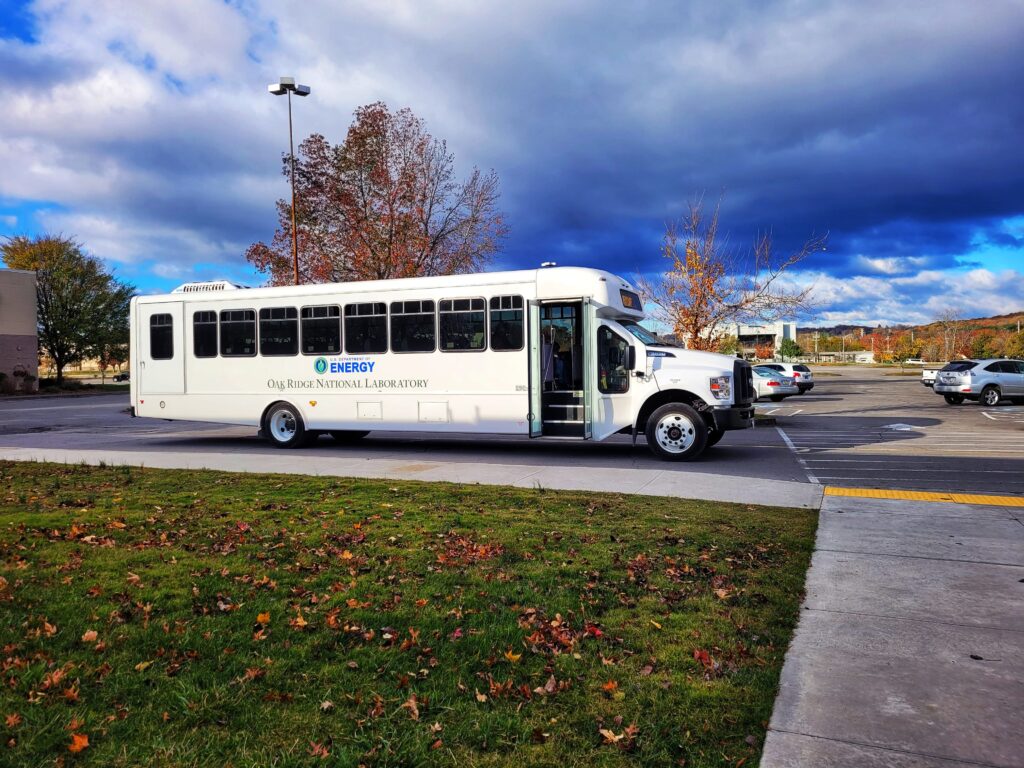
A Day in Oak Ridge, TN
Oak Ridge has been on my bucket list a long time and we were able to make it to one of the last bus tours of the season in November. We did have a couple disappointments- we didn’t realize the X-10 Graphite Reactor was closed and that’s one of the coolest parts of the tour and the NPS visitor center was temporarily closed that day because of an event too. We also just didn’t vibe with the volunteer tour guide- he didn’t do anything wrong, but we just personally didn’t like his tour style. We still enjoyed the visit, but I’d probably like to go back to see the stuff we missed someday.
American Museum of Science and Energy
We kicked off our day in Oak Ridge at the American Museum of Science and Energy (AMSE), which is also where you check in for the DOE bus tour. Since the tour starts before the museum officially opens, we had a little time to explore after checking in, which was a great bonus.
AMSE is packed with exhibits that dive into Oak Ridge’s role in the Manhattan Project and beyond. We wandered through galleries on Big Science, National Security, Environmental Restoration, and Energy Leadership, plus a section dedicated to the history and impact of the Manhattan Project. There are also rotating temporary exhibits, so you never know what cool thing might be on display. When the tour kicked off, we were led by two guides- one was a retired Oak Ridge National Lab employee who had firsthand knowledge of the work done there, and the other was a staff member from AMSE. It set the tone perfectly for a day of diving deep into some seriously fascinating history.
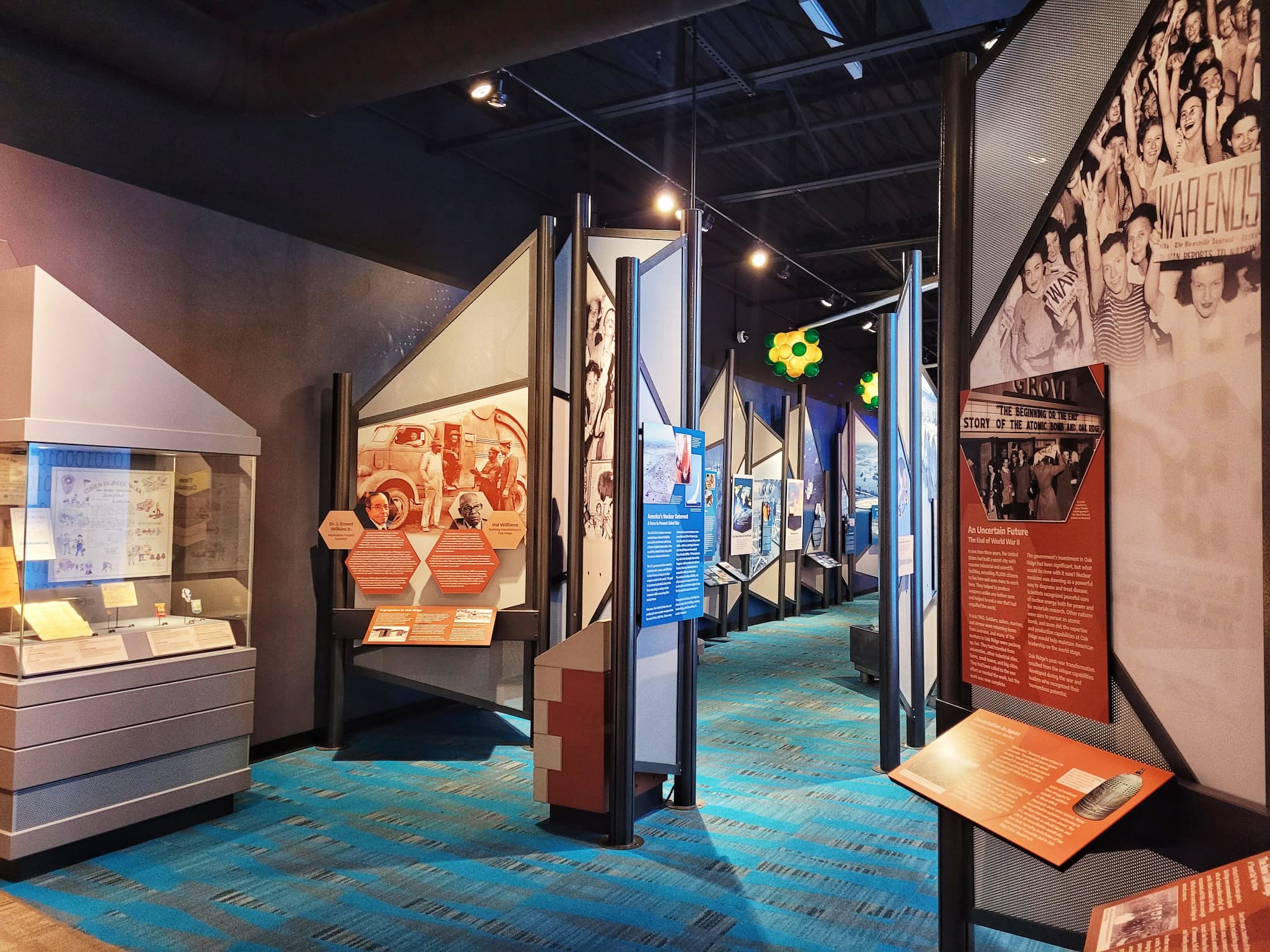
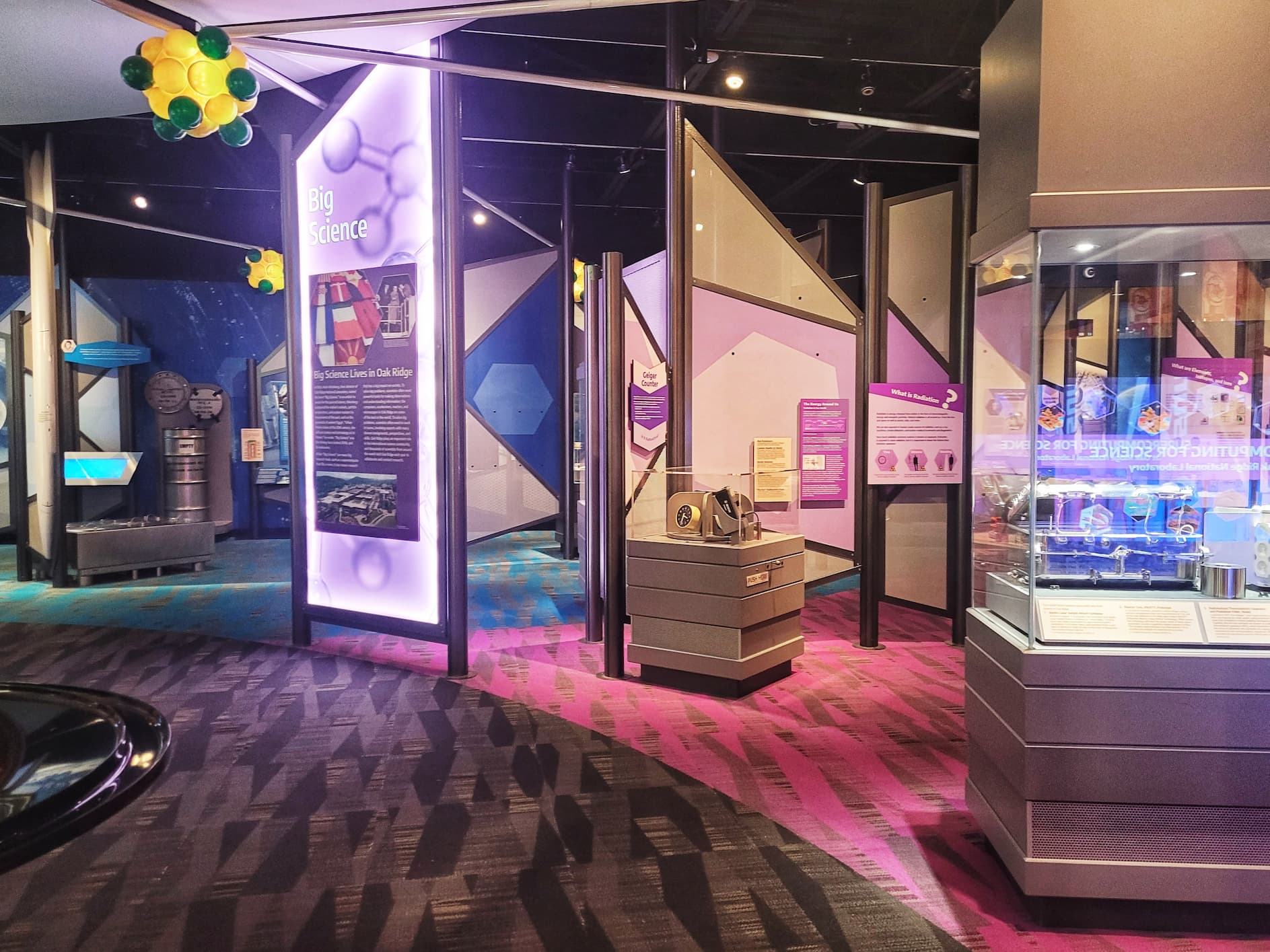
Visiting AMSE
115 E Main St, Oak Ridge, TN 37830
https://amse.org/
If you’re not visiting as part of the bus tour, you can visit the museum Monday-Saturday 9am-5pm and Sunday 1am-5pm. Tickets are $10 for adults and $5 for kids 6-17 and activity military. Kids under 6 are free.
K-25 History Center
Our first stop on the bus tour was the K-25 History Center, which sits on the grounds of what used to be one of Oak Ridge’s most important, and most secretive, sites during the Manhattan Project. Back in 1943, construction began on the K-25 plant, part of a massive 60,000-acre expansion in East Tennessee that would help fuel the creation of the atomic bomb. The K-25 facility used a method called gaseous diffusion to enrich uranium, a process that was absolutely cutting-edge at the time. In fact, the building itself was once the longest roofed structure in the world- about a mile from end to end. Most of the people working there back then didn’t even know what they were helping to build.
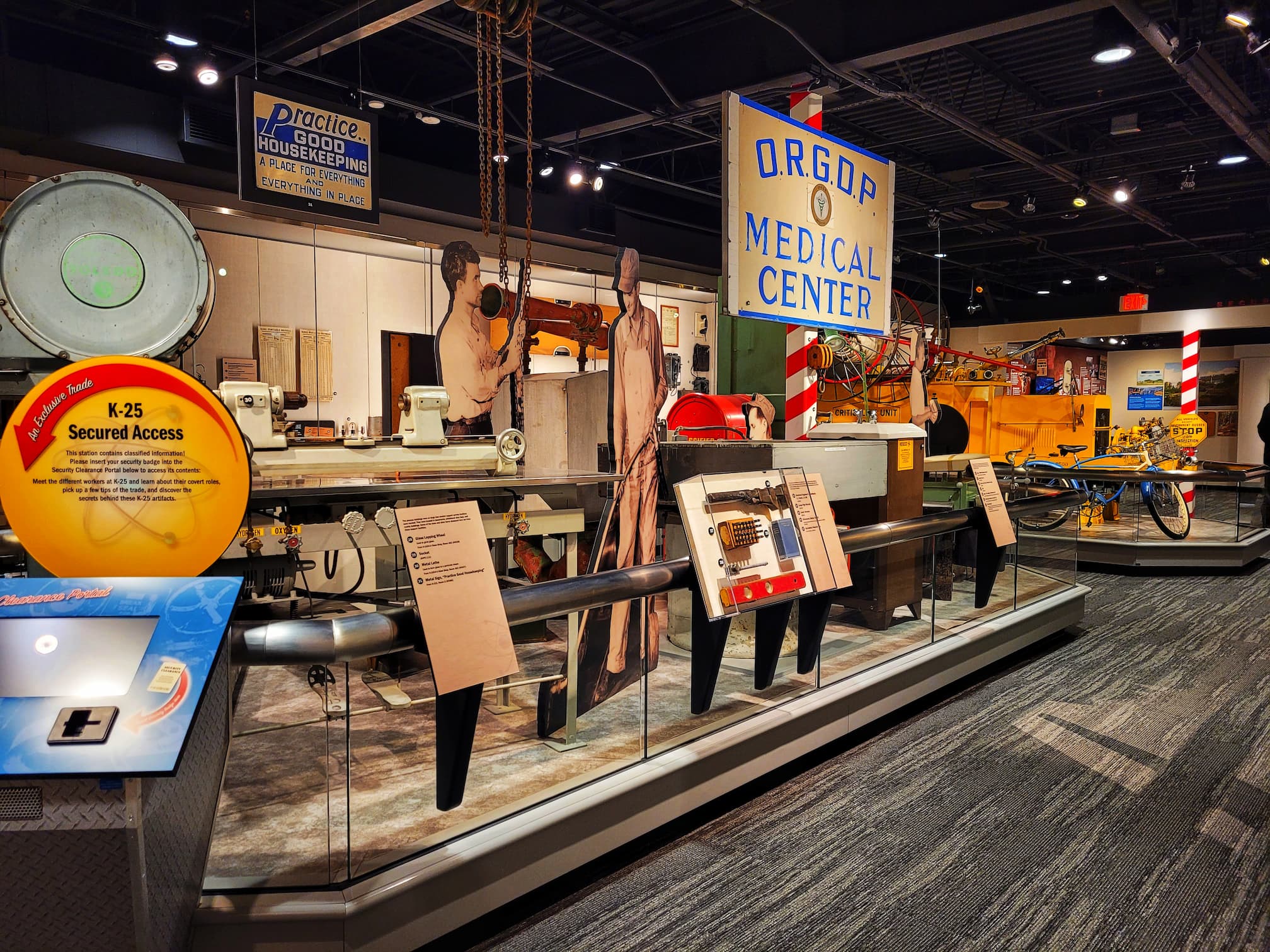
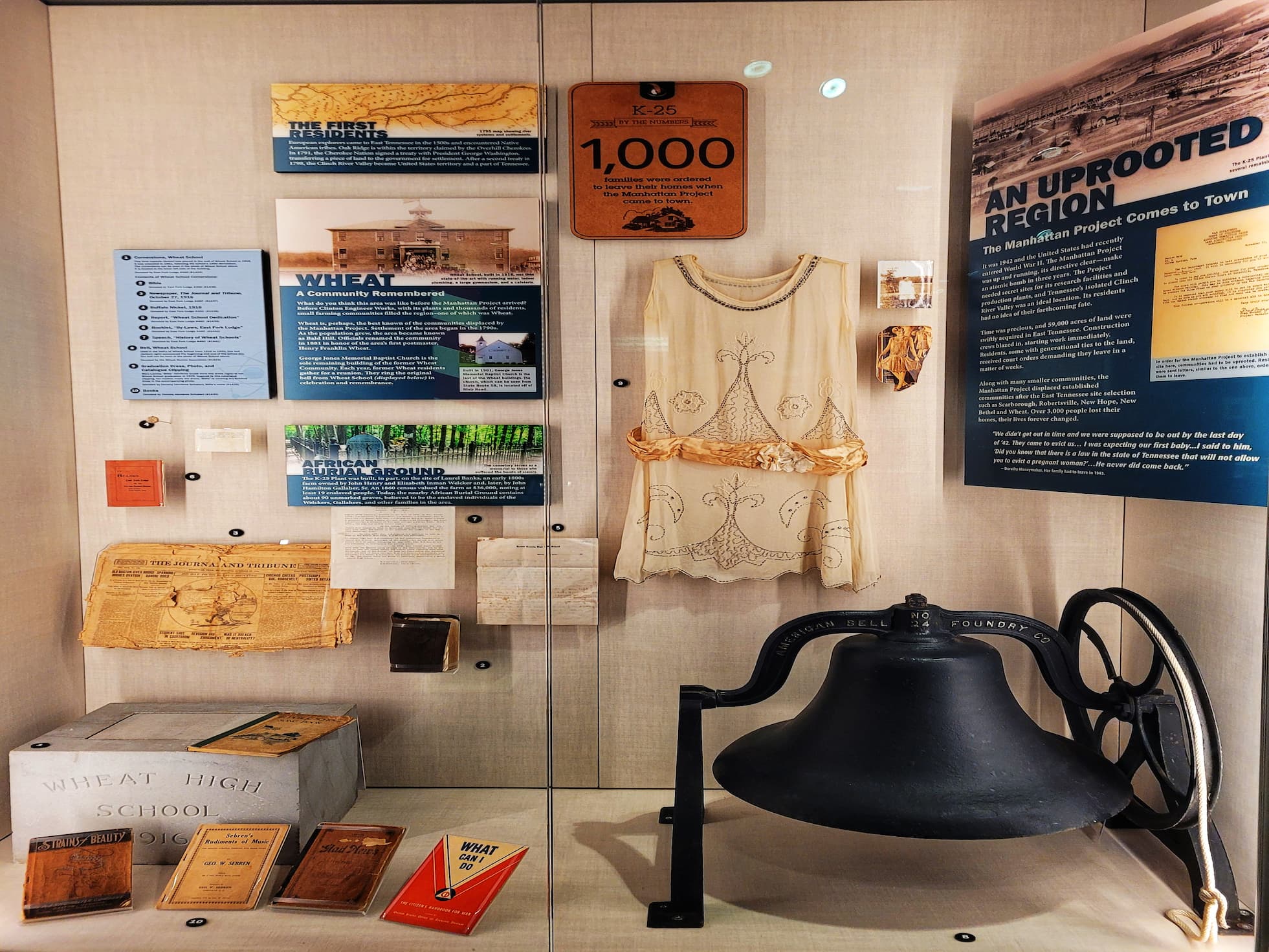
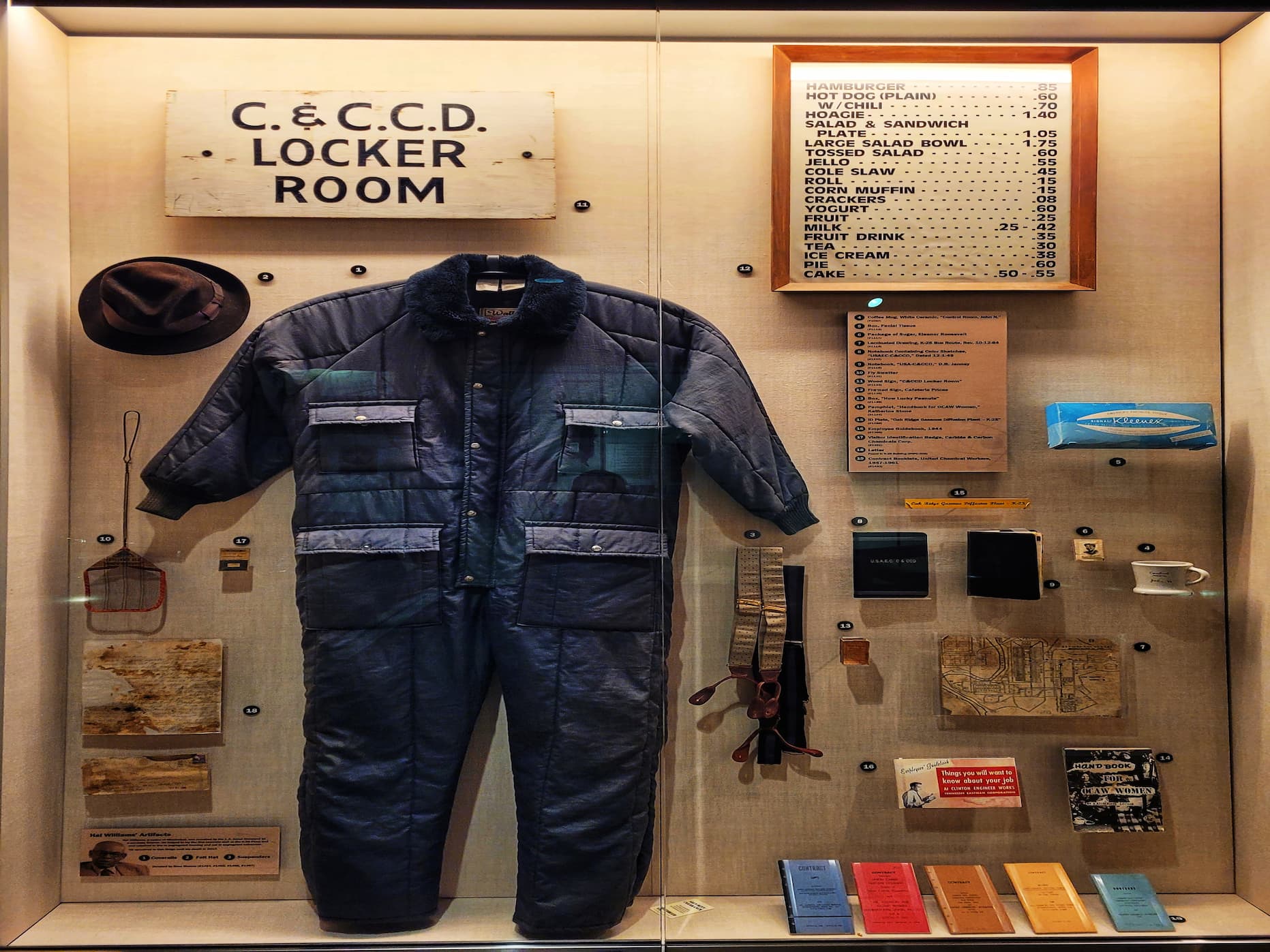
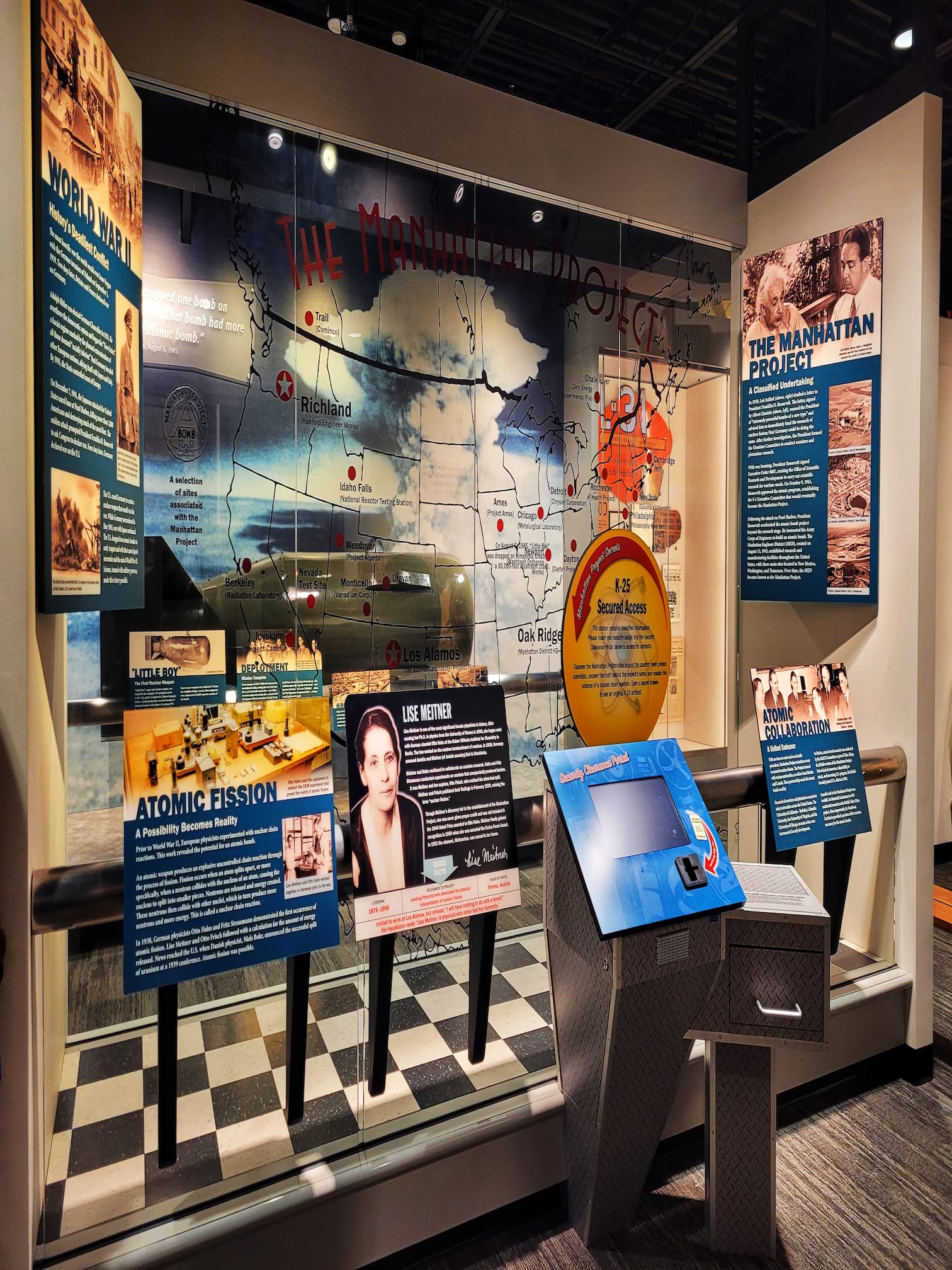
Today, the K-25 History Center does a great job bringing that hidden history to life. There are over 250 original artifacts on display, along with detailed exhibits covering everything from day-to-day operations to the science behind uranium enrichment. The museum is laid out in themed galleries like the Security Checkpoint, Briefing Room, K-25 Operations, and more. When we visited, there was even a temporary exhibit on Cold War-era toys, which was a fun little surprise. The visit started with a bit of free time to explore, followed by a group talk with a guide who shared an overview of Oak Ridge’s role in the Manhattan Project. After that, we broke off to explore more on our own. We preferred taking our time reading the signs and looking at the exhibits rather than staying with the group.
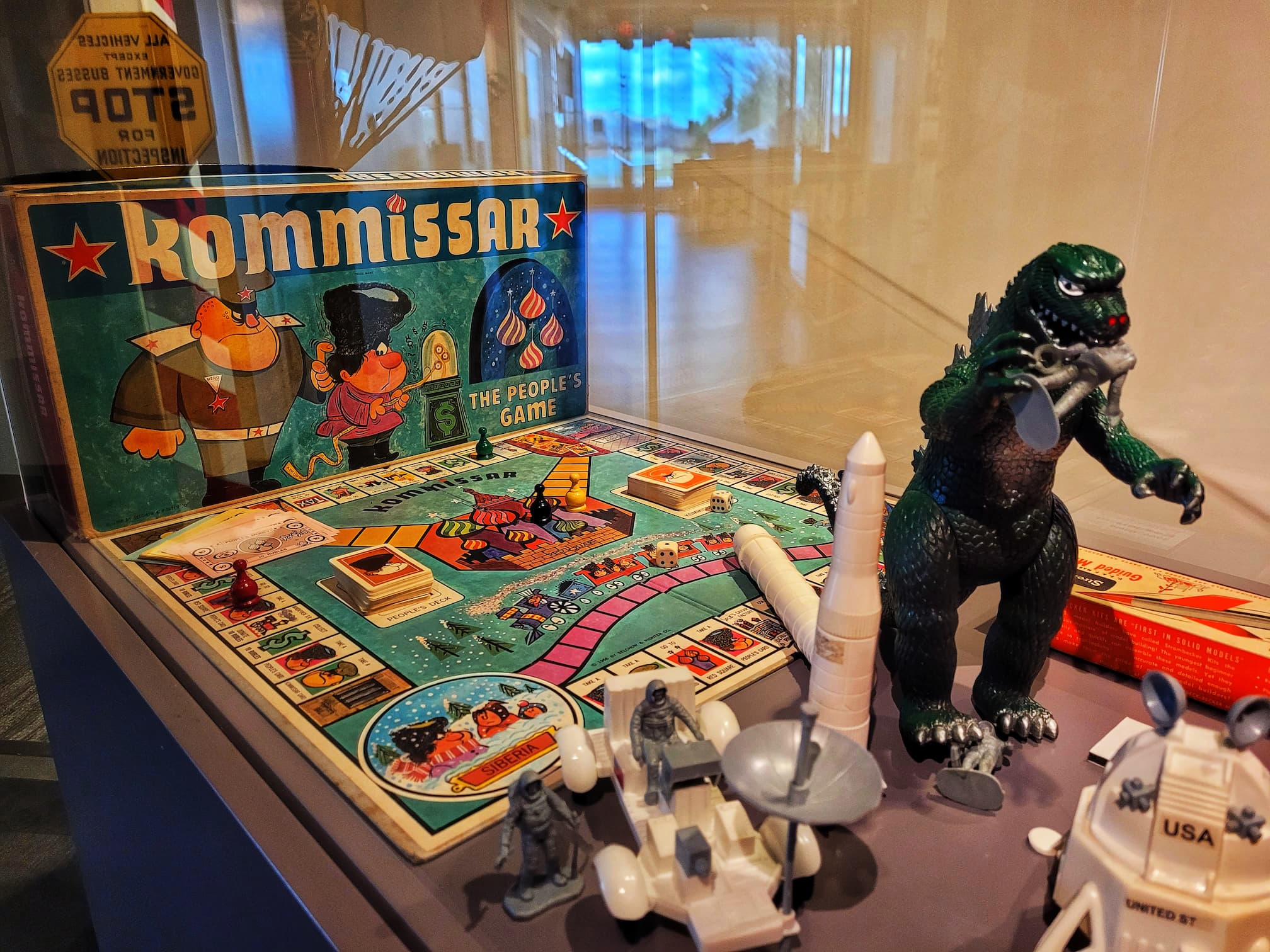
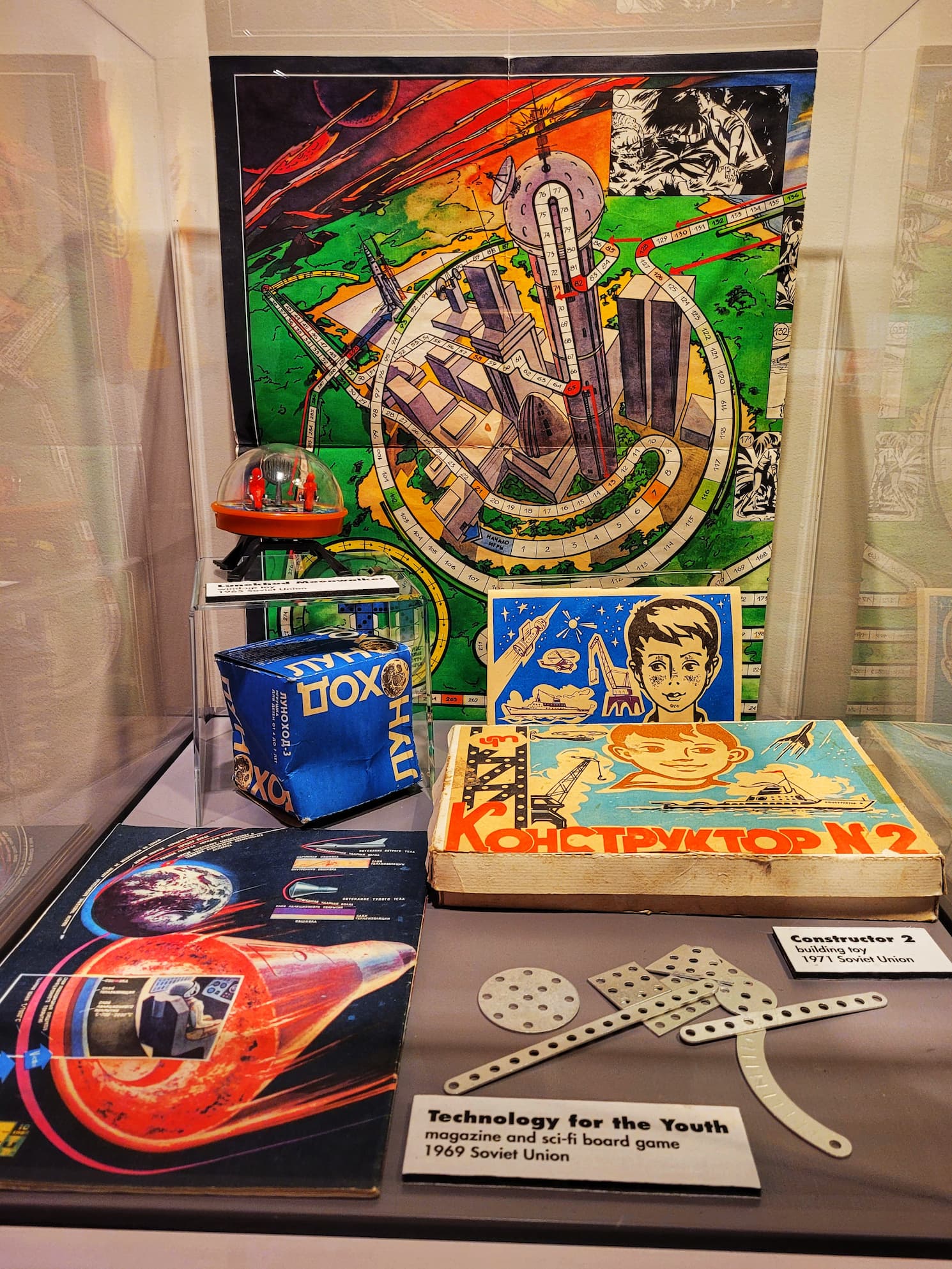
Visiting the K-25 History Center
652 Enrichment St, Oak Ridge, TN 37830
https://k25historycenter.org/
If you’re not visiting as part of the bus tour, you can visit K-25 Monday-Saturday 9am-5pm and Sundays 1-5pm. Tickets are $10 for adults, $5 for kids aged 10-17, $4 for military and seniors, $3 for kids aged 6-9.
Oak Ridge National Laboratory
One of the coolest parts of the day was getting to visit the Oak Ridge National Laboratory and stepping inside the world of cutting-edge computing at the Computational Sciences building. Our group stopped there to see Frontier, which until recently held the title of the fastest supercomputer in the world. It was recently bumped to second place in the November 2024 rankings by a new machine called El Capitan, but Frontier is still mind-blowingly powerful. Its storage system alone can hold over 30 times the amount of data in the entire Library of Congress. The rankings are part of the TOP500 Project, which publishes a list of the world’s most powerful supercomputers twice a year.

We had to wait a bit in the lobby before being led to a glass-walled viewing area where we could see Frontier in action. It’s hard to describe just how massive and complex it looked. While we were hanging out afterward, our guide told us about Summit, the lab’s former supercomputer that had once ranked in the top 10 worldwide, that was being decommissioned. They originally weren’t going to take us to see it, but then the museum staff member with us offered to take anyone who was interested. Of course we jumped at the chance. It was honestly fascinating to see the dismantling process and think about how quickly this kind of tech evolves. Seeing both the present and past of supercomputing in one visit made this stop a real highlight.
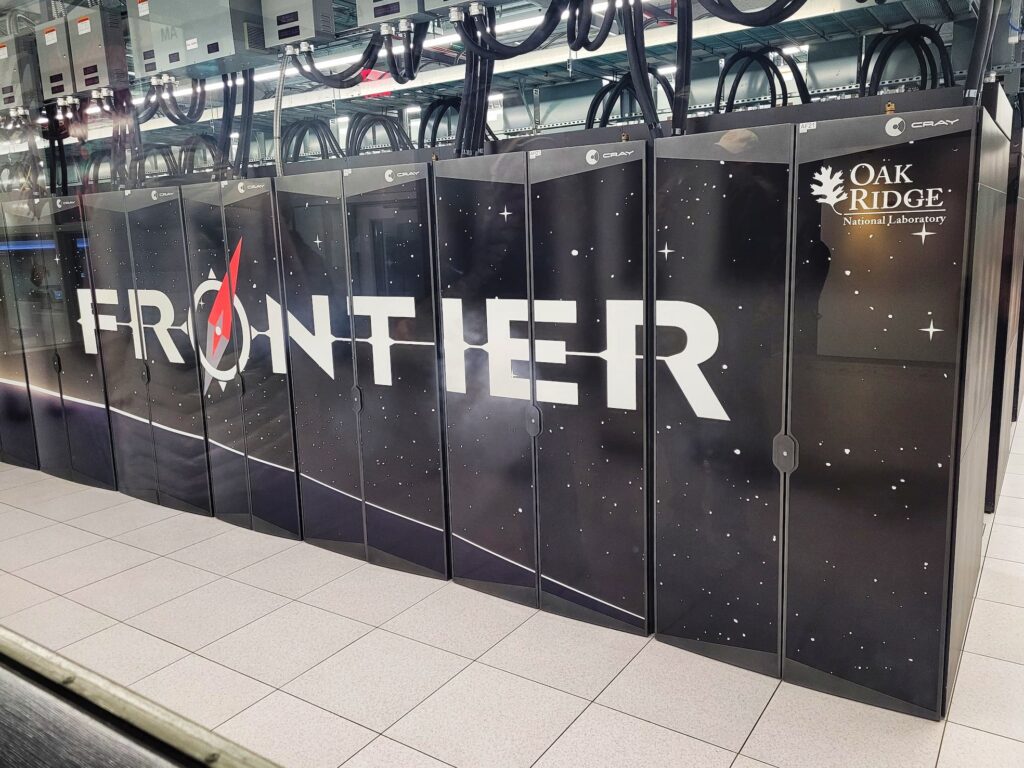
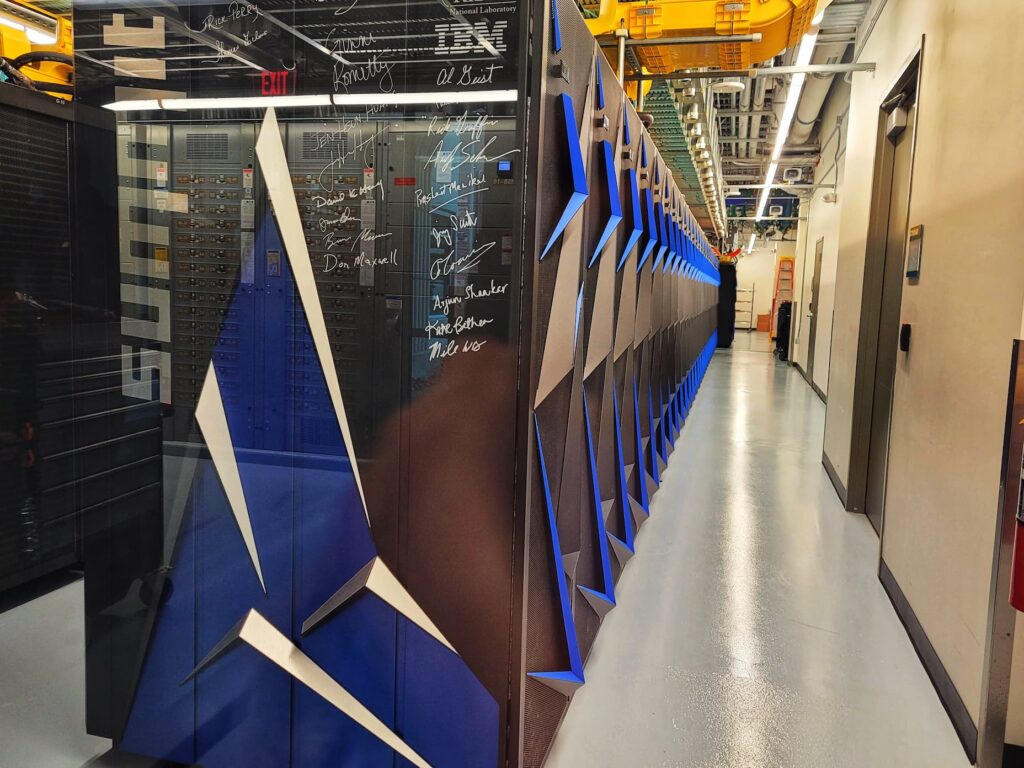
This was the third National Laboratory we’ve visited, and now I want to visit as many as I can! We’ve also visited Aurora, the #3 supercomputer before, so I guess we need to make it out to California to visit #1!
New Hope Visitor Center at Y-12
Our final bus stop of the day was the New Hope Visitor Center at the Y-12 National Security Complex, where we got a deeper look into both the history and the ongoing mission of this important site. Back during the Manhattan Project, Y-12 was where they separated uranium isotopes, specifically isolating uranium-235, which ended up being used in the “Little Boy” bomb dropped on Hiroshima. The facility used a process called electromagnetic isotope separation and, at its peak during WWII, employed over 20,000 people, including the famous “Calutron Girls” who operated equipment without knowing exactly what it was for.
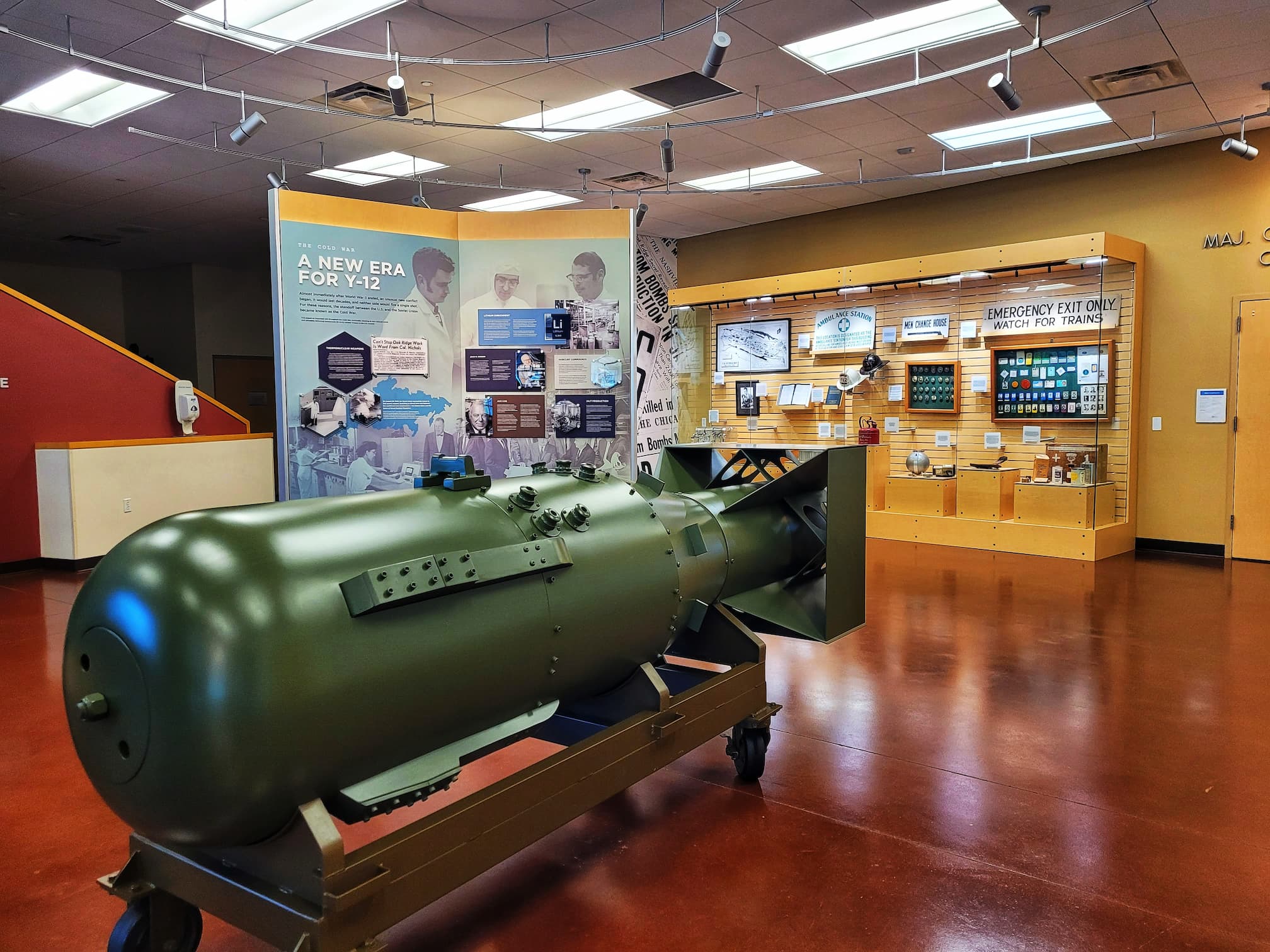
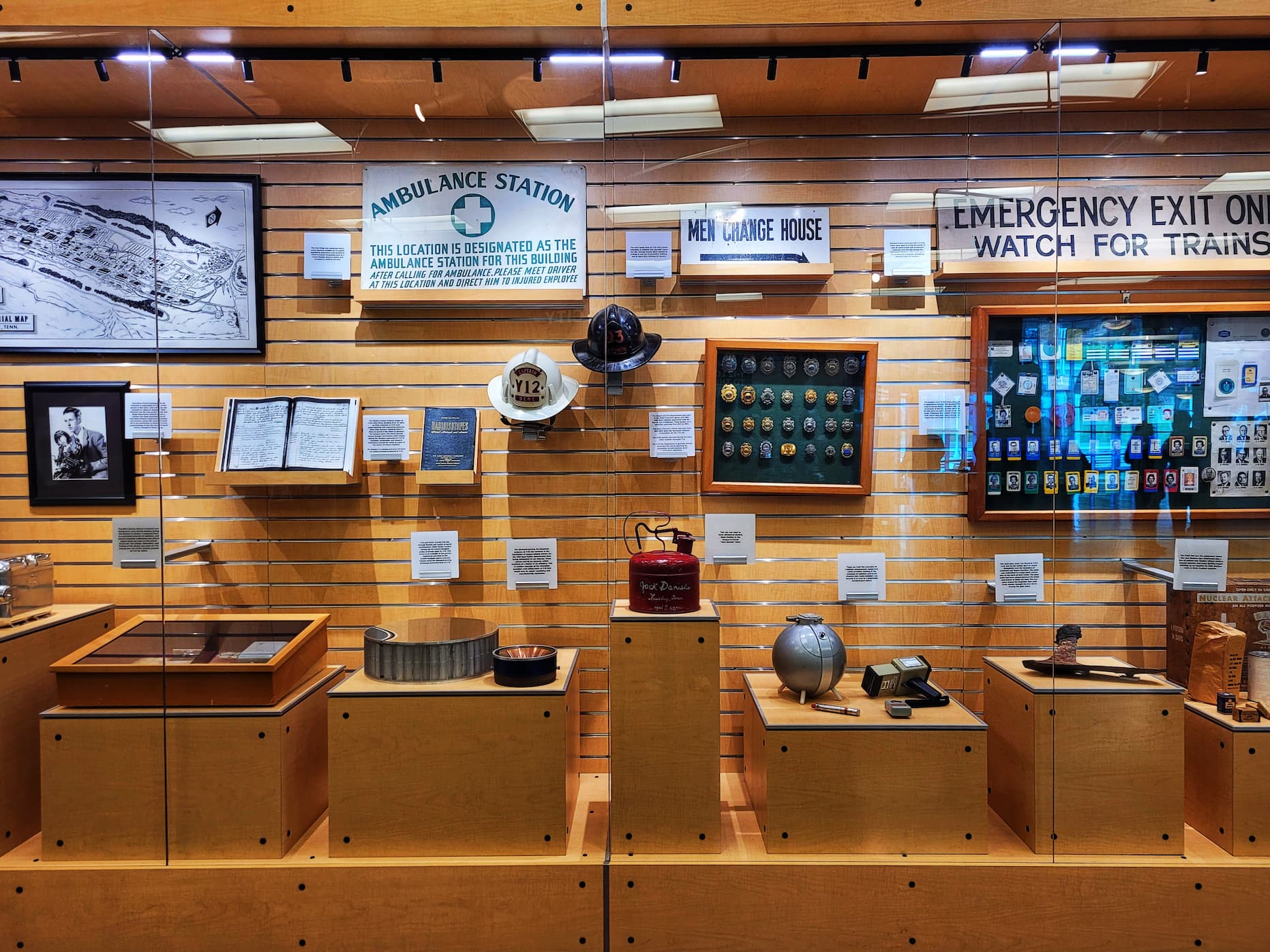
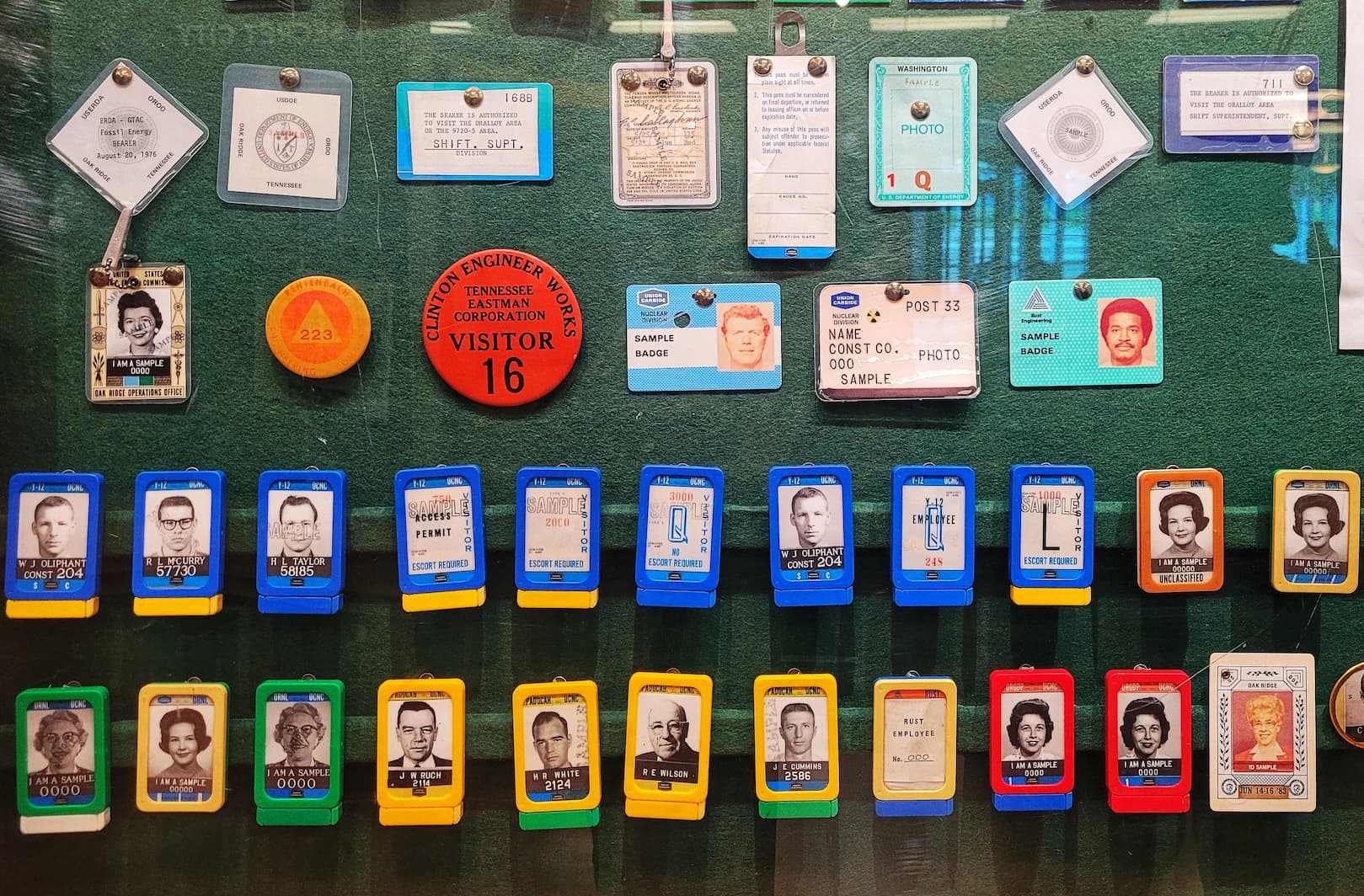
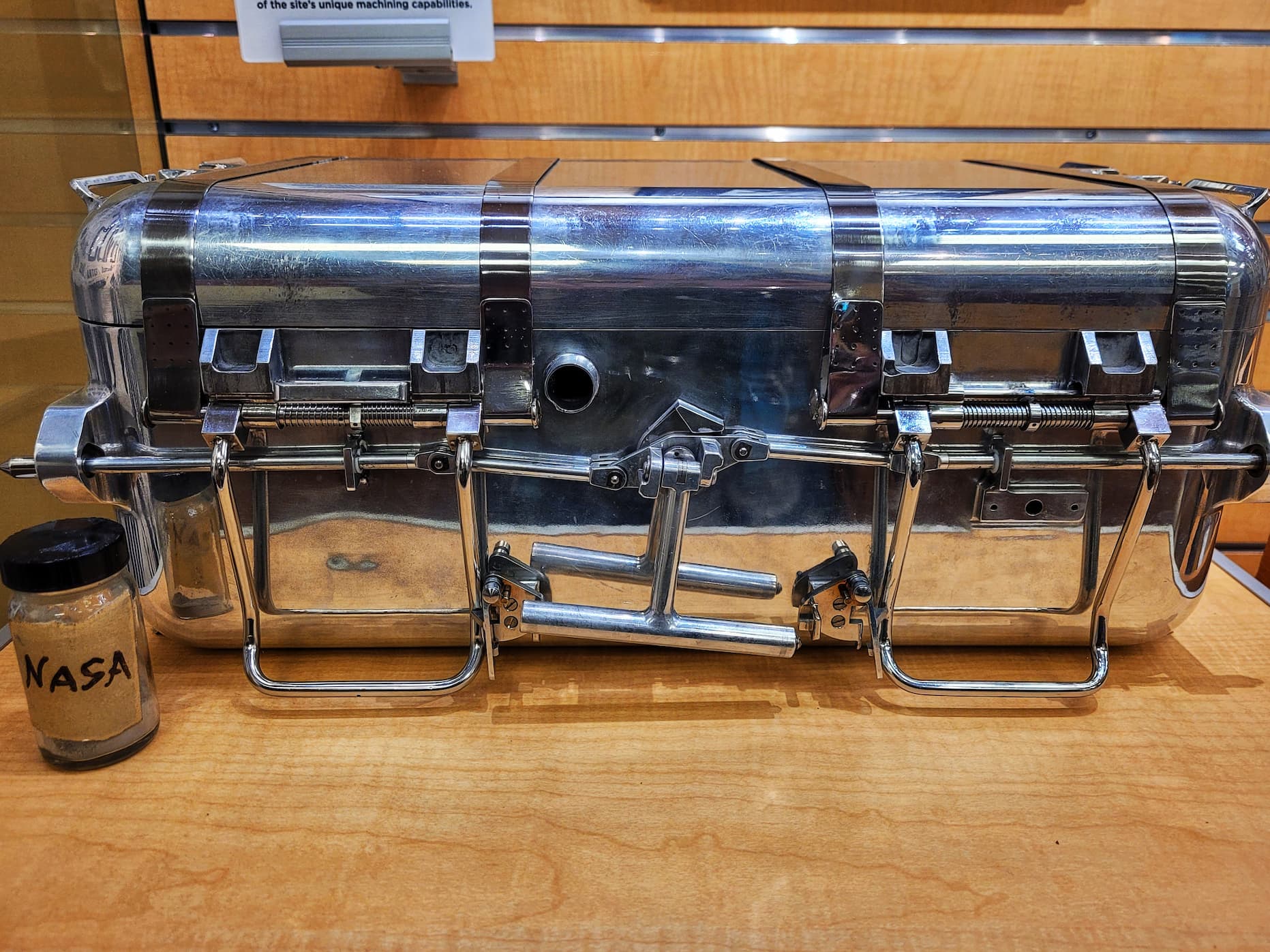
At the visitor center, our tour group was welcomed by one of their education staff, who gave a great overview in the main gallery, which is full of exhibits on the Manhattan Project, the Cold War, and Y-12’s continuing work. After the talk, we followed her down the hall to check out a series of interpretive displays highlighting Y-12’s modern roles like safely managing nuclear materials, powering Navy reactors, and collaborating with national and international partners. It was a nice blend of past and present, and a great way to wrap up our look at Oak Ridge’s scientific legacy.
Jefferson Soda Fountain
22 N Jefferson Circle, Oak Ridge, TN 37830
Open Tuesday-Saturday 8am-2pm
After we got back to AMSE, we were ready for lunch. I wanted something on theme for the day and found Jefferson Soda Fountain- an old fashioned soda fountain inside a pharmacy. It was started back in 1944 and is located in Jefferson Square, one of the original shopping centers from the Secret City days. The food here was really simple, but also really good and really cheap! It was fun to pay in the pharmacy too and gave exactly the old school vibes I wanted for a history-themed day.
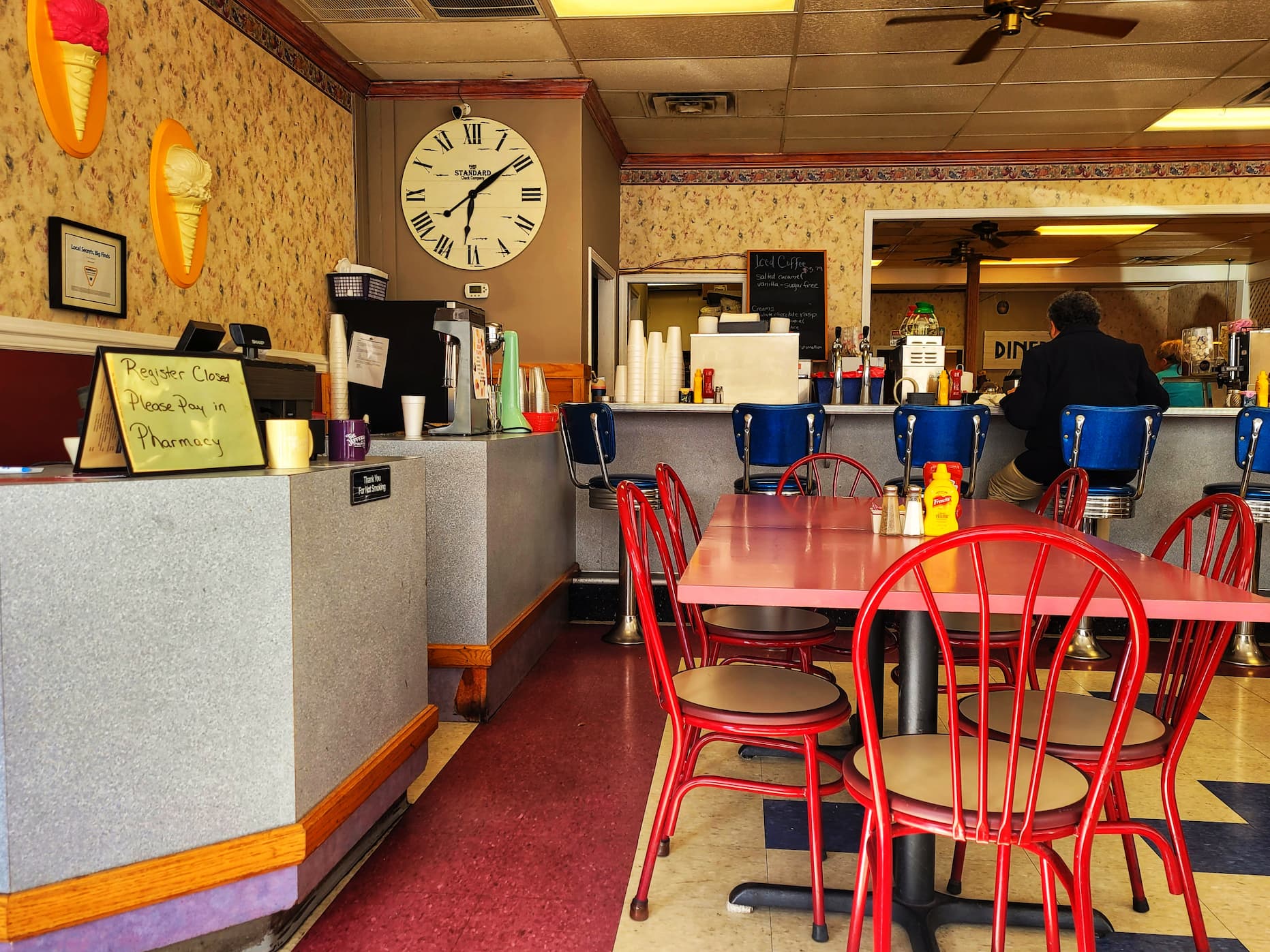
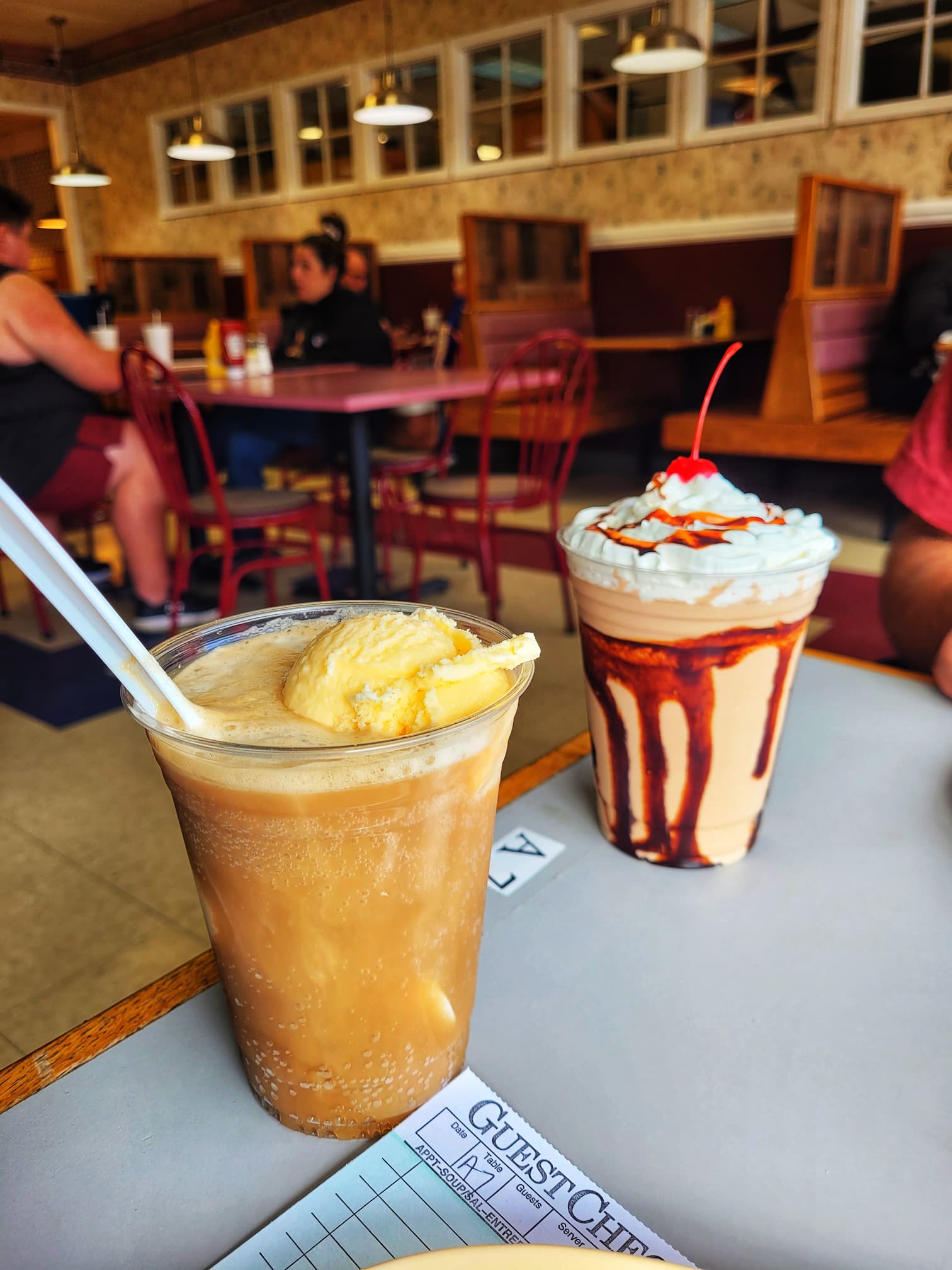
Oak Ridge History Museum
After grabbing a quick lunch post-tour, we made our next stop: the Oak Ridge History Museum. While the rest of the day focused heavily on the science and national security side of the Manhattan Project, this museum dives into the everyday lives of the people who lived and worked in Oak Ridge during that time and that’s always been the part that fascinates me most.
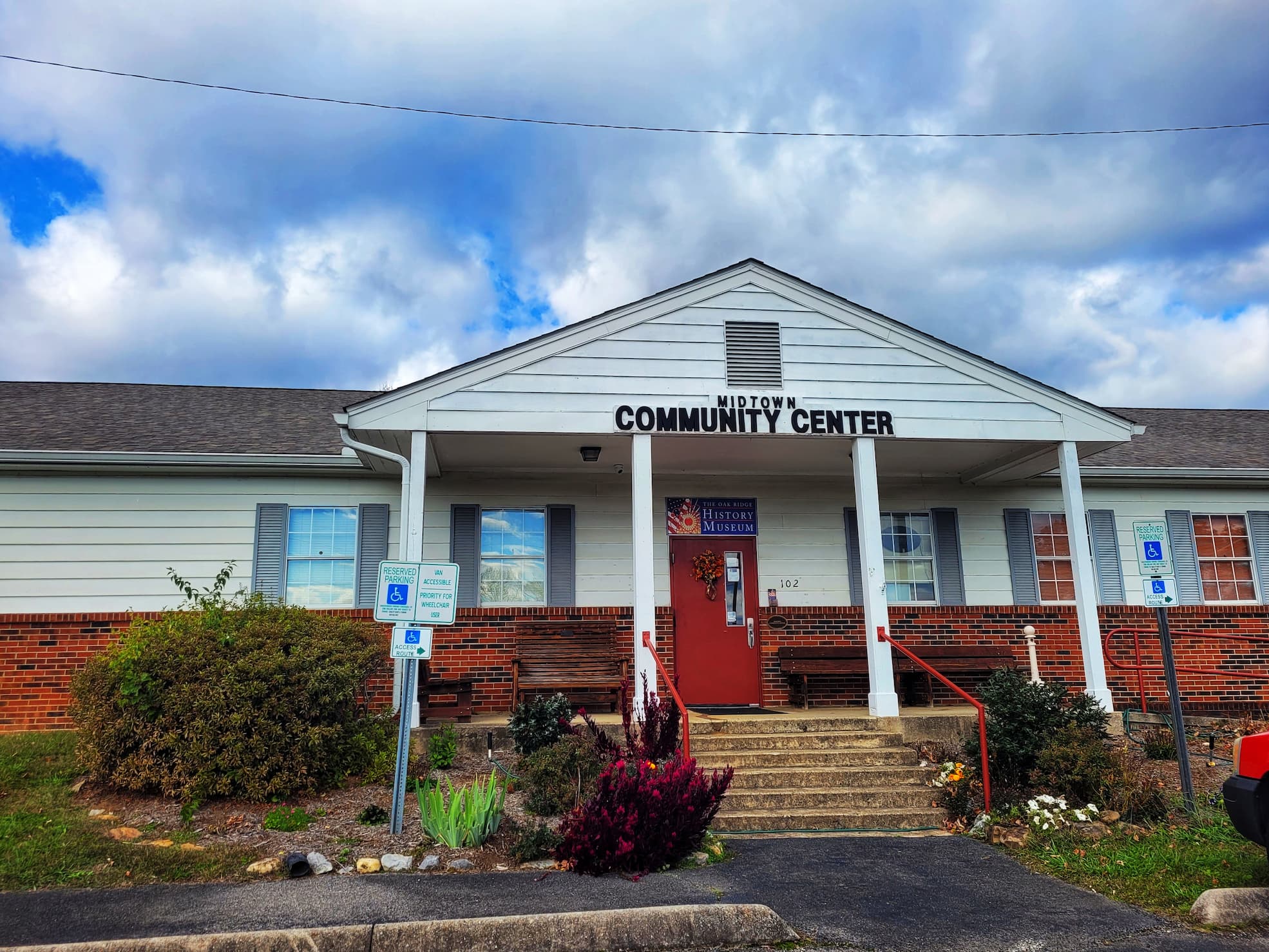
We started off with a short, informal tour led by a volunteer who walked us through the main gallery and then out back to see the museum’s replica hutment. These small plywood buildings were used as temporary housing during the Manhattan Project- basic sixteen-by-sixteen-foot structures with no insulation and a coal stove in the middle. There was no plumbing, so residents had to use communal bathhouses. They were designed to house four or five people, and at just twenty cents a day, they were the only housing option made available to Black workers at the time. It was sobering to step inside one and imagine what daily life would’ve looked like in those cramped, bare-bones quarters.
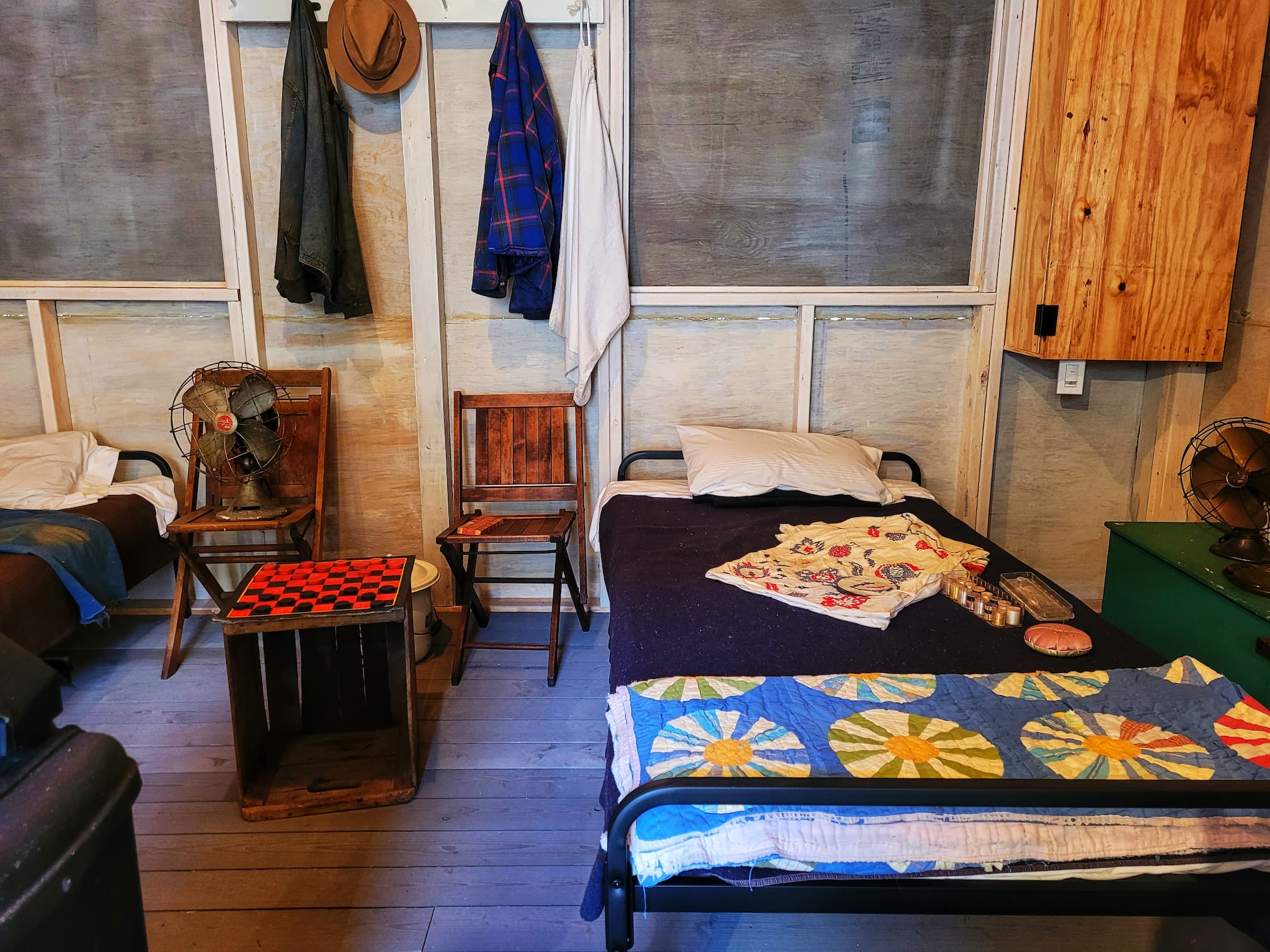
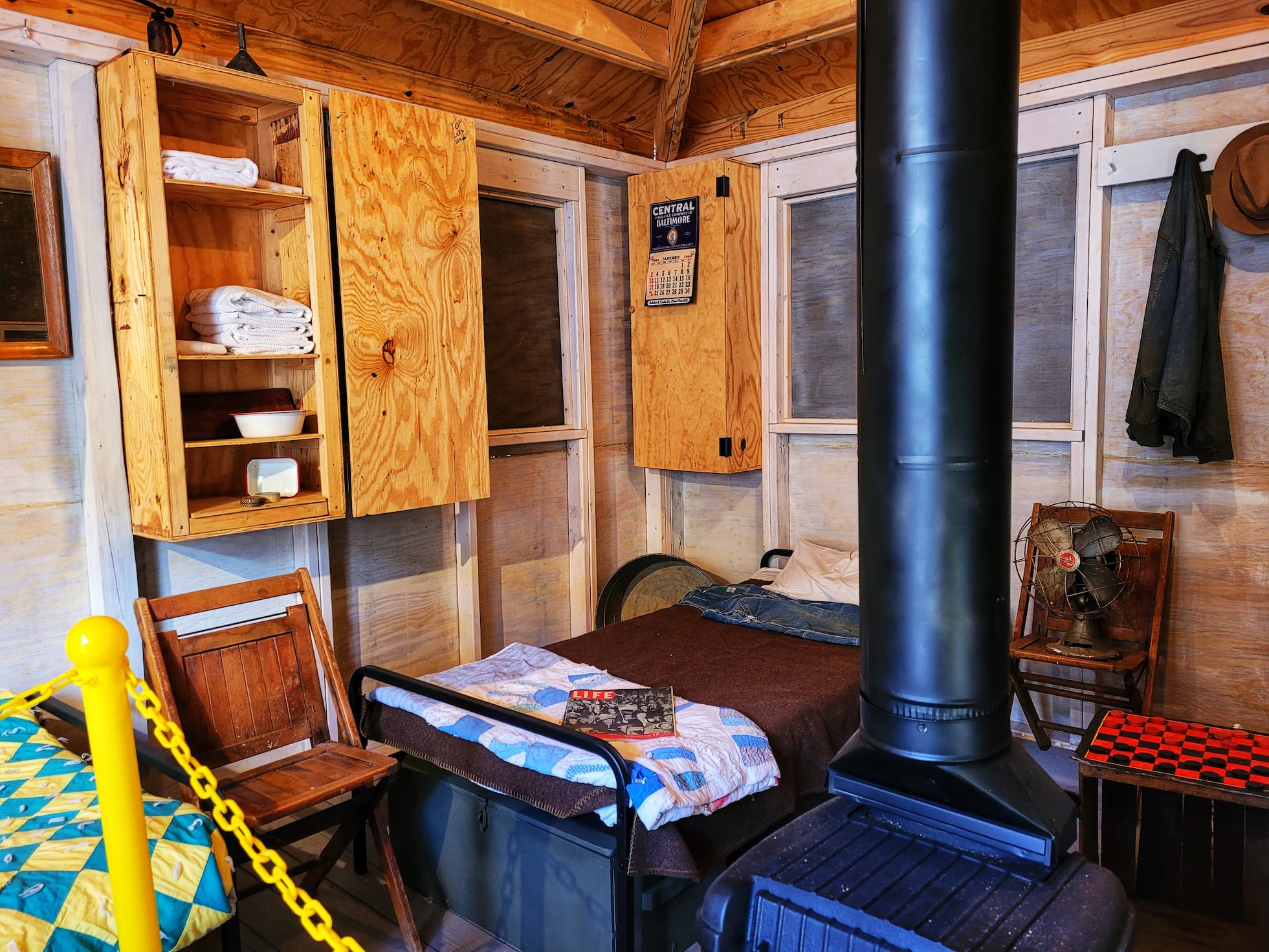
Inside the museum, we explored exhibits covering everything from schools and sports teams to scout groups and civic life in Oak Ridge during the 1940s. The Ed Westcott Gallery was a standout, Westcott was the official photographer for the Manhattan Project in Oak Ridge, and his photos offer a rare, unfiltered glimpse into the people and moments that made up the so-called “Secret City.” He took over 5,000 photographs, many of which now serve as the most iconic images of life in wartime Oak Ridge.
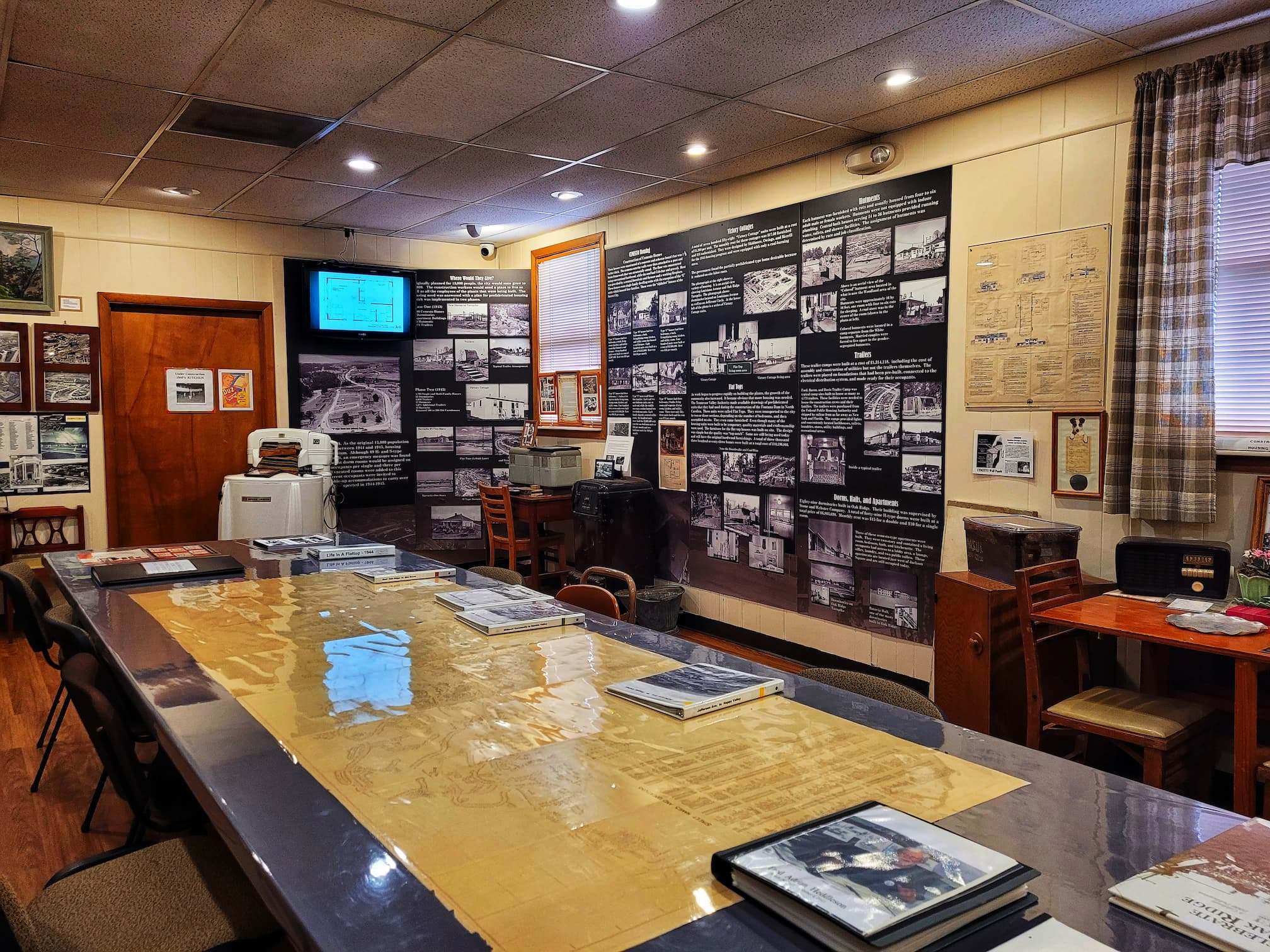
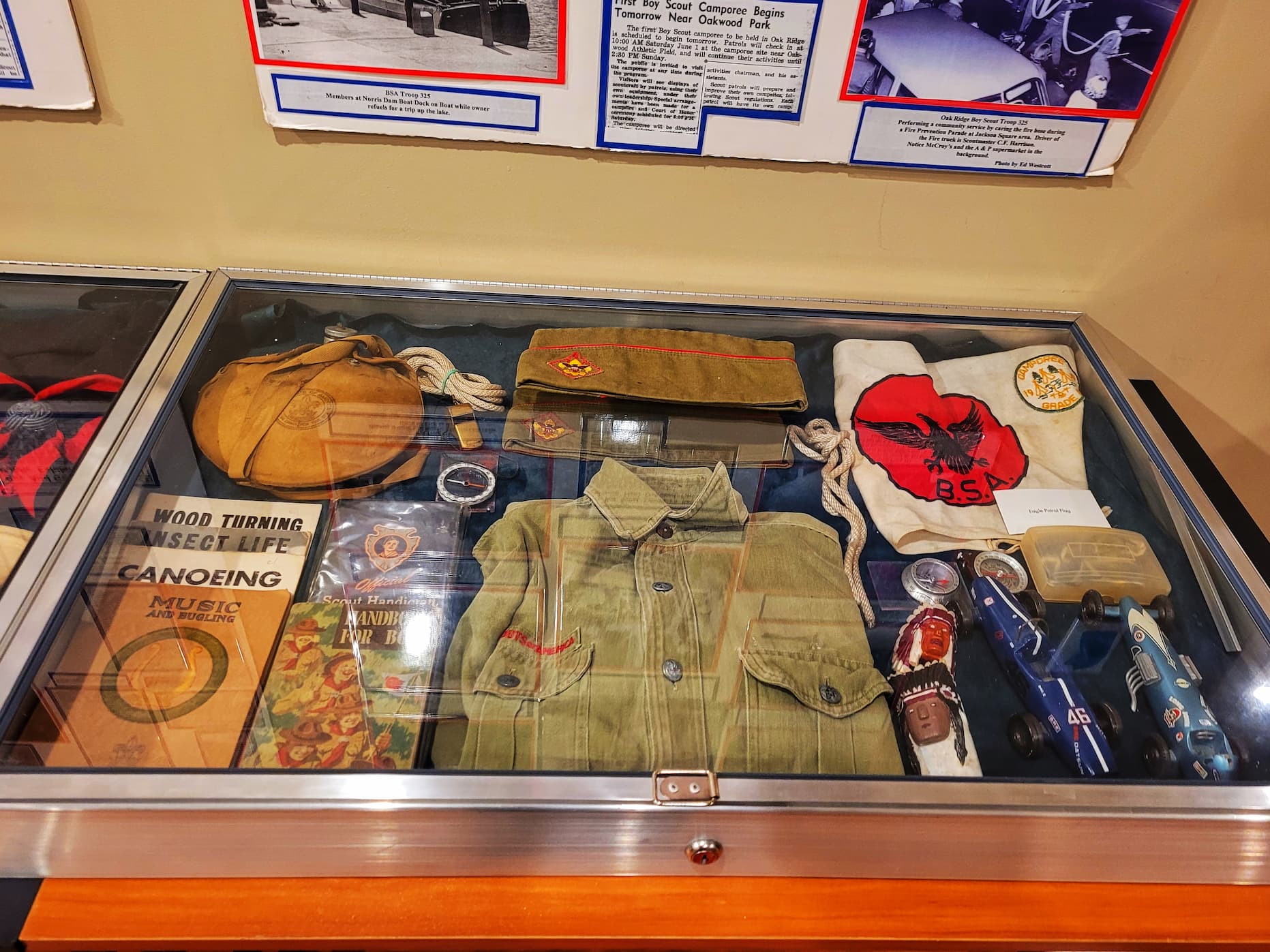

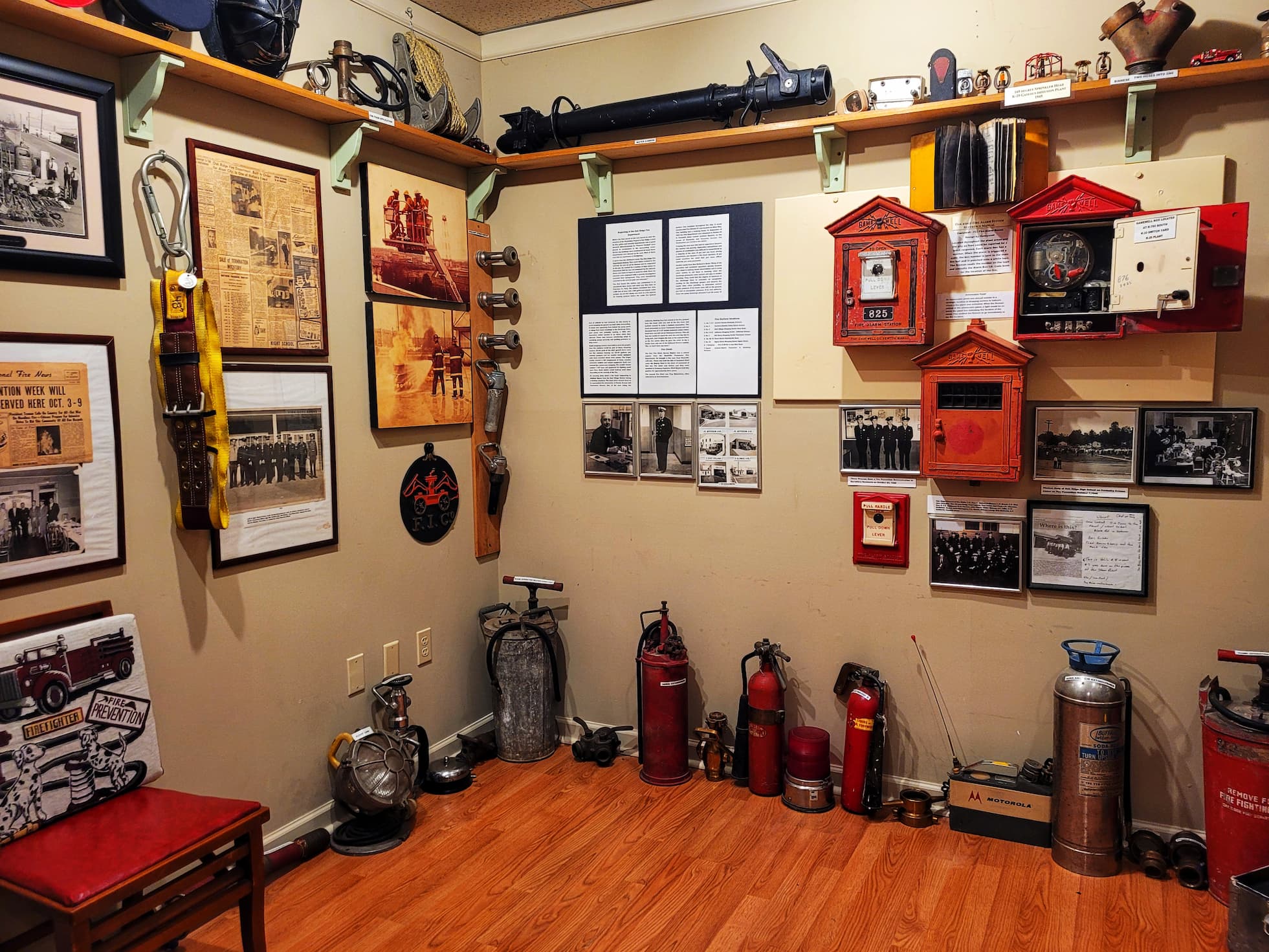
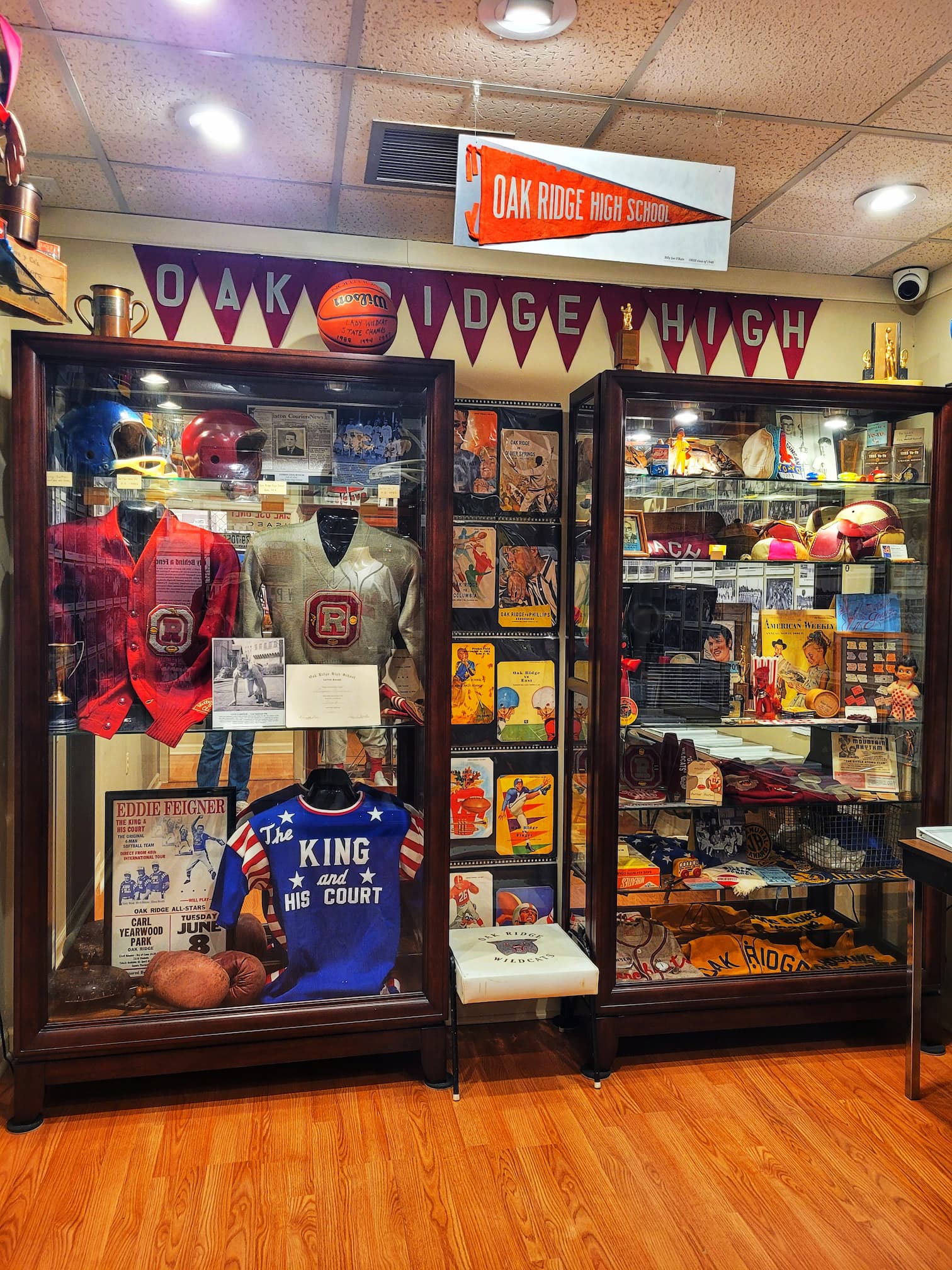
What always gets me about this place isn’t just the scale of the science or the role it played in world history, it’s that there was this entire community built from the ground up, almost overnight. It had churches and schools and little league games and scout troops. To the kids growing up here, it probably just felt like any other town. But it absolutely wasn’t. It was built for a singular, world-altering purpose, and most people living inside it had no idea what that purpose even was.
Visiting the Oak Ridge History Museum
102 Robertsville Rd, Oak Ridge, TN 37830
https://oakridgehistorymuseum.com/
The Oak Ridge History Museum is located in the history Midtown Community Center building from the Secret City days. It’s open Tuesday-Friday 10am-4pm and Saturday 10am-3pm. Tickets are $10 for adults and kids aged 13+ and $8 for military, veterans, and first responders. Kids 12 and under are free.
International Friendship Bell in Bissell Park
After wrapping up our time at the Oak Ridge History Museum, we took a short walk across the street to Bissell Park to visit the International Friendship Bell.
The bell itself was cast in Kyoto, Japan in 1993, but the story behind it begins a few years earlier. In 1987, Oak Ridge resident Shigeko Uppuluri, who was originally from Japan, traveled there with her husband Ram Uppuluri, an employee at Oak Ridge National Laboratory. While visiting a Buddhist temple near the Japan Atomic Energy Institute, they came across a large bell, originally intended to draw tourists, but it sparked an idea. That inspiration eventually became the International Friendship Bell.
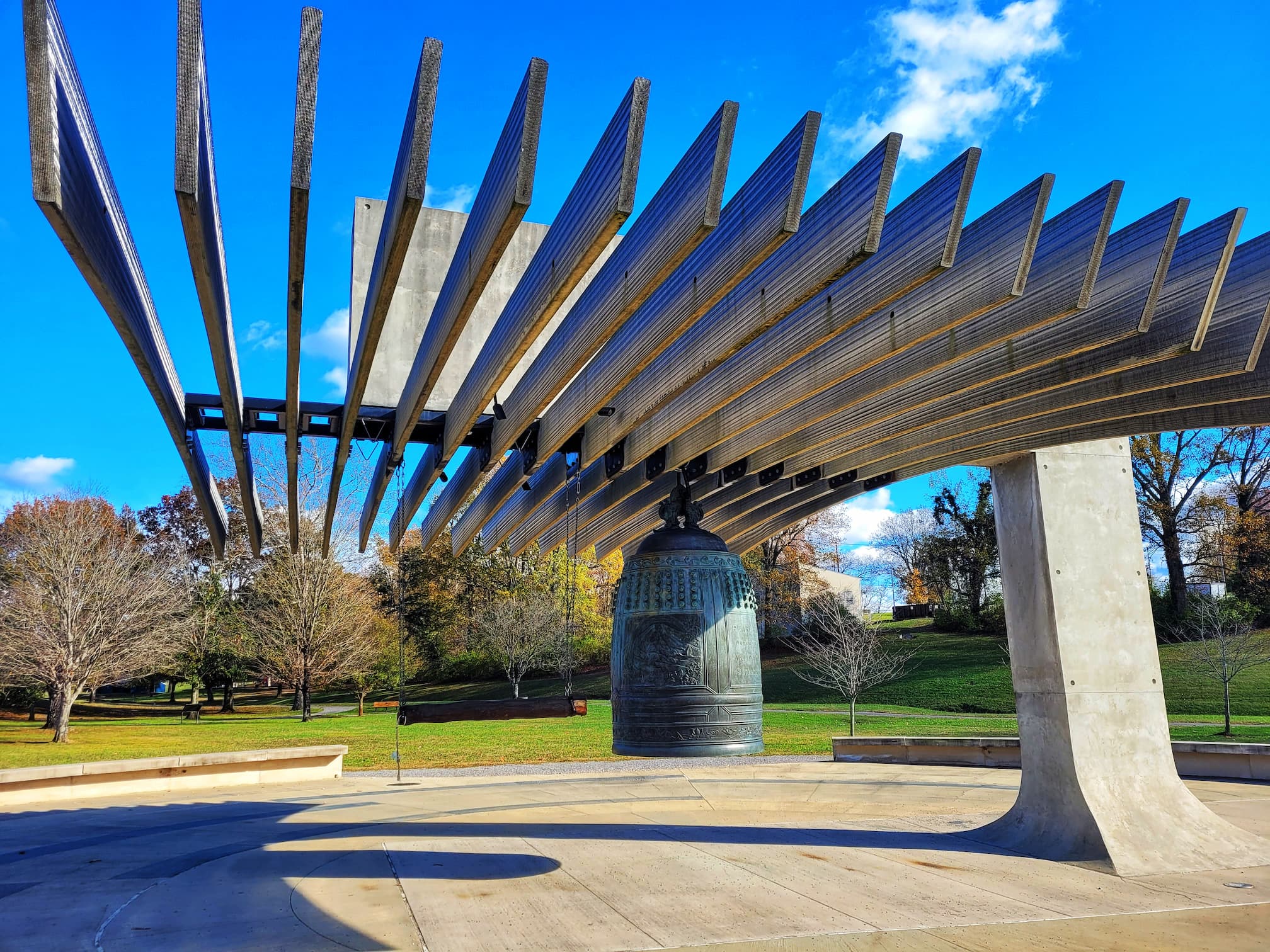
In 1990, Oak Ridge formed a sister city relationship with Naka-machi in Japan. That same year, the city began planning events to commemorate its upcoming 50th anniversary. The theme of the celebration was “Born of War, Living for Peace, Growing Through Science,” and out of that came the formation of the International Friendship Bell Committee.
Local artist Suzanna Harris was chosen to design two of the bell’s panels: one featuring symbols of Tennessee, the other representing Japanese culture. A rainbow connects the two panels, culminating in an atomic symbol, a nod to Oak Ridge’s complicated origin. A third panel was designed to reflect on the tragedies of war, with engravings that include the dates of Pearl Harbor, V-J Day, and the atomic bombings of Hiroshima and Nagasaki. Other details, like Mt. Fuji and flying cranes, add to the visual storytelling, emphasizing peace and healing.
The Uppuluris commissioned renowned Japanese bell maker Sotetsu Iwasawa, who personally visited Oak Ridge and agreed to cast the bell for $83,000. The final product weighs in at 8,000 pounds and stands 7 feet tall- an impressive piece of art and symbolism nestled in a quiet corner of the park.
Oak Ridge History Driving Tour
After visiting the Friendship Bell, we hopped back in the car to do part of the self-guided driving tour offered by the Oak Ridge History Museum. We had picked up a printed packet during our earlier visit, which included maps and descriptions of key locations from the city’s past. What’s especially cool is that many of the original Manhattan Project-era buildings are still around today, just repurposed for modern use.
One of our favorite stops on the tour was The Guest House, now known as the Alexander Inn. Built in 1943, it was one of the first permanent structures in Oak Ridge and served as a temporary residence for some of the most prominent figures involved in the Manhattan Project. General Leslie Groves, physicist J. Robert Oppenheimer, and Secretary of War Henry Stimson were all guests here during the war years. This building played a key role in hosting military leaders, scientists, and top-level officials who traveled between the Manhattan Project sites to share sensitive information and oversee operations.
While it’s no longer a hotel, the Alexander Inn has been thoughtfully renovated and now serves as an assisted living facility- still very much a part of the Oak Ridge community. Driving by it today, it’s wild to think of all the history held within those walls.
The rest of the tour highlighted more original buildings, many tucked among modern development but still hinting at the city’s secretive beginnings. We didn’t get to every stop on the map, but the packet made it easy to follow and gave us a deeper appreciation for the town as it exists now, layered with history and still evolving.
For more info on sites to drive to in Oak Ridge, check out this page on the National Park Service website.
What We Missed in Oak Ridge
We missed a few things during our Oak Ridge visit that hopeful someday we’ll be able to come back and see.
Children’s Museum of Oak Ridge
Although we didn’t get to visit it during our trip, the Children’s Museum of Oak Ridge is a great spot for anyone interested in learning more about the town’s history and its impact on the younger generation. Unfortunately the day we visited, it was closed for a fundraising gala that evening. The museum has exhibits covering Oak Ridge life, as well as art, science, and environmental studies- perfect for both kids and adults alike.
The building itself has a unique history. It was once the Highland View Elementary School, which opened in 1943 as Oak Ridge’s population exploded due to the Manhattan Project. Over the next two years, the town had to build multiple schools to accommodate the growing number of children, with enrollment quickly reaching 11,000 by the end of World War II. The school system had to make do with limited resources, and teachers played a critical role in shaping the education of the community’s youth. If you’re visiting Oak Ridge, this museum offers an interesting glimpse into the town’s past and how education played a vital role in shaping its future.
Visiting the Oak Ridge Children’s Museum
The Children’s Museum is typically open Tuesday-Saturday 10am-4pm and Sunday 1-4pm. Tickets are $10 for adults and $8 for kids 3-17.
Manhattan Project National Historical Park Visitor Center
We also missed the Manhattan Project National Historical Park Visitor Center, which is located inside the Children’s Museum of Oak Ridge. Unfortunately, it was closed the day we were in town because of the Museum’s gala too.
The Oak Ridge location is part of the larger Manhattan Project National Historical Park, which also includes sites in Hanford, Washington, and Los Alamos, New Mexico. If you’re able to visit when it’s open, you’ll find National Park Service rangers on hand, a short film about the Manhattan Project, and plenty of brochures to guide you through the history of the area. The Visitor Center is usually open Tuesday through Saturday from 10 a. to 4 pm and Sunday from 1 pm to 4 pm.
For anyone with a National Park Passport, this is also a great stop! You’ll get the regular park stamp along with a unique three-part stamp- one part for Oak Ridge, and the other two parts in Los Alamos and Hanford to complete the full picture. Hopefully, we’ll be able to visit on our next trip!
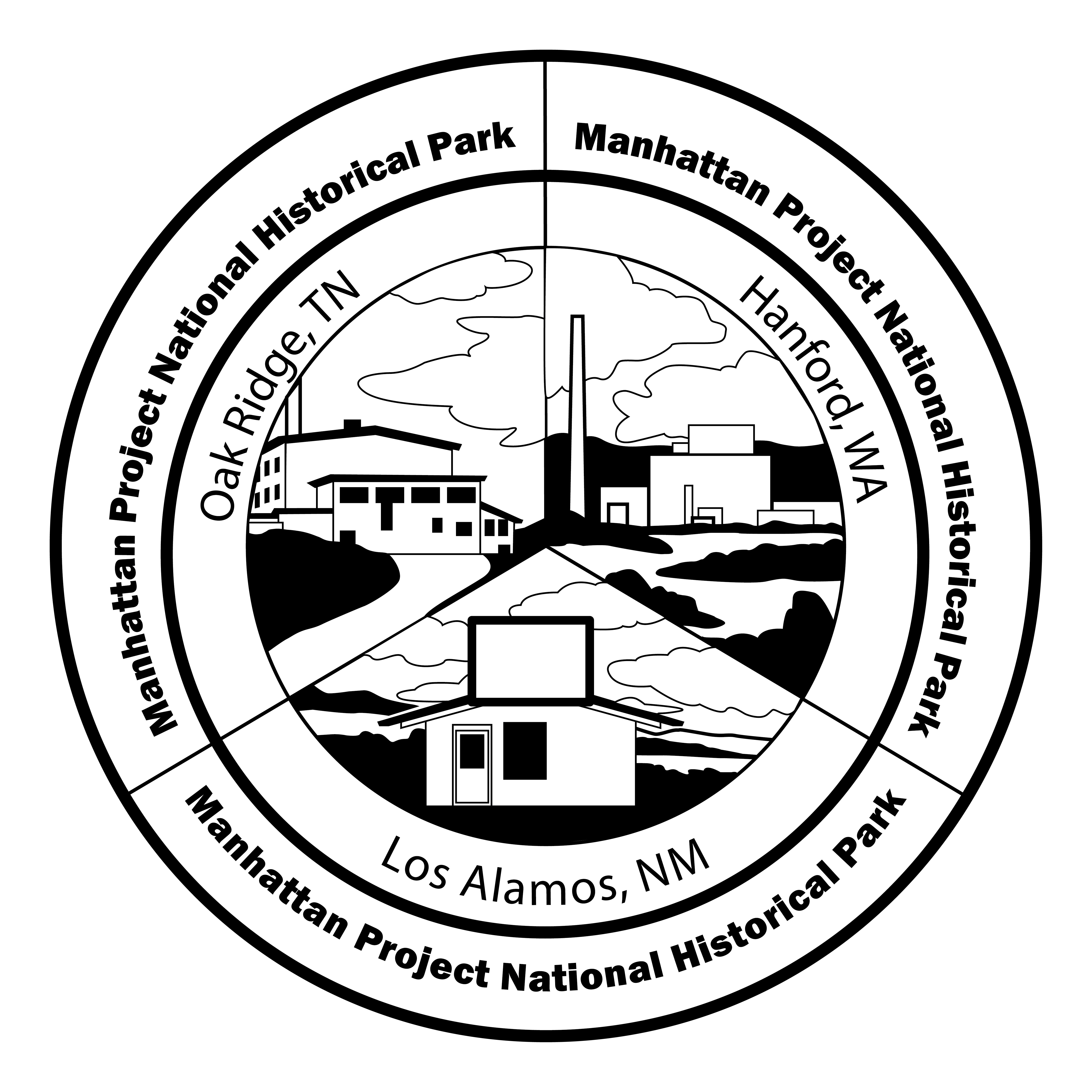
John Hendrix, the Prophet of Oak Ridge
We ran out of time during our visit, but one thing we really wanted to explore was the story of John Hendrix, known as the “Prophet of Oak Ridge.” Born in 1865, Hendrix’s life was marked by personal tragedy when his two-year-old daughter died, and his wife left him, taking their other children with her. Grieving and searching for answers, Hendrix turned to religion and mysticism, eventually claiming to have visions, which he shared with his community. Many dismissed him as crazy, and authorities even had him committed to the county farm, which was essentially a poorhouse.
However, Hendrix famously escaped, and after predicting that the farm would burn down within a month, it was struck by lightning and destroyed. Though many ignored his visions during his lifetime, his most famous prophecy described the future of Oak Ridge:
“I tell you, Bear Creek Valley someday will be filled with great buildings and factories, and they will help toward winning the greatest war that ever will be. And there will be a city on Black Oak Ridge, and the center of authority will be on a spot middle-way between Sevier Tadlock’s farm and Joe Pyatt’s Place. A railroad spur will branch off the main L&N line, run down toward Robertsville and then branch off and turn toward Scarborough… Big engines will dig big ditches, and thousands of people will be running to and fro. They will be building things, and there will be great noise and confusion and the earth will shake… I’ve seen it. It’s coming.”
Hendrix’s prophecy eerily mirrored the establishment of Oak Ridge as the Secret City during the Manhattan Project, and his story is preserved through the John Hendrix Memorial Prayer Walk. This half-mile nature trail tells his story, and visitors can also see his grave. Although we didn’t have time to visit, it’s definitely on our list for next time!
Secret City Book Reviews
Part of what first got me interested in Oak Ridge was reading two books about the women of Oak Ridge back in 2019. The Atomic City Girls by Janet Beard is a novel about life in Oak Ridge and The Girls of Atomic City by Denise Kiernan is a nonfiction book about women working in Oak Ridge. Back in 2019 for an old blog I reviewed and compared these two books and wanted to share it again here:
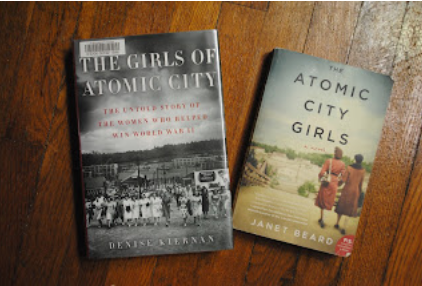
The Atomic City Girls by Janet Beard is a novel set in Oak Ridge, TN, one of the homes of the Manahattan Project during WW2. The Atomic City Girls follows the lives of June Walker, her roommate Cici, Dr. Sam Cantor, and African-American construction worker Joe Brewer once they become residents of Oak Ridge. June and Cici work in the Y-12 plant as Calutron girls and Dr. Sam Cantor is a physicist who oversees the lab where they work. June and Sam begin dating, which drives June and Cici apart. Cici is busy anyways trying to find a rich man to marry and pretending she’s not poor. Joe works hard and hopes to bring his wife and kids to Oak Ridge eventually. His roommate, Ralph, who is like a son to him, begins going to meetings to help make life better for the African-American people at Oak Ridge
The title of The Atomic City Girls is rather misleading, since two of the main characters we follow are men. Overall, though, it was definitely worth the read. Oak Ridge in general interests me and it was well-written enough to enjoy. The characters did start to get annoying though- particularly June and Sam’s story. Sam is depressed and a little unhinged, which June keeps putting up with for no apparent reason. June is a curious and intelligent woman, who seeks knowledge well beyond what she learned in her rural school. She could do so much better than alcoholic mopey Sam. The more interesting story to me was Joe and Ralph’s. Oak Ridge really was very segregated and the difference in treatment of people who were all working hard on the same project is appalling to the modern reader. Reading about the early efforts to change things was interesting though.
The basis of The Atomic City Girls is fairly fact-based, but the people and their relationships are fictional. There was enough research done to make the book enjoyable and to still provide insight into the real lives of the people who worked in Oak Ridge.
The Girls of Atomic City: The Untold Story of the Women Who Helped Win World War II by Denise Kiernan is a nonfiction book about Oak Ridge, TN. The Girls of Atomic City focuses on 9 real women who lived and worked in Oak Ridge. Kiernan based the book mainly on interviews she conducted herself. Even with its high level of research, it still came out a highly enjoyable read. It reads more like a narrative than just dry facts. In between chapters about the women’s lives were short chapters about the development of the bomb itself and the science behind it. It was nice to have this background knowledge interspersed, instead of all being chunked together.
The only complaint I have about The Girls of Atomic City is that it left me wanting more! I wanted more stories about these amazing women.
So which book should you read? If you have the time, I’d read both. They both give good looks into every day life in Oak Ridge. If you only have the time to read one, I’d go with The Girls of Atomic City since it’s all fact-based, but still reads like a novel.
Other Manhattan Project Sites We’ve Visited
Although it’s less famous than Oak Ridge or Los Alamos, our home state of Illinois also played a major role in the Manhattan Project. Chicago played a crucial role in the Manhattan Project, particularly with the development of the first nuclear reactor. The University of Chicago’s Stagg Field became the site of the world’s first controlled nuclear chain reaction in 1942, led by physicist Enrico Fermi. This achievement was a pivotal moment in the race to build atomic weapons, marking Chicago as a key location in the scientific efforts of the Manhattan Project. The city’s contributions extended beyond the reactor, with numerous scientists, engineers, and laborers working in support of the project. Today, Chicago’s history with the Manhattan Project is commemorated at sites like the University of Chicago’s Physics Building and the nearby Argonne National Laboratory.
Even lesser known, is the spot were the first nuclear reactor was buried in a forest preserve in the suburbs. We visited that site (and stood on top of the buried reactor!) a few years back, which you can read all about in our post:




